Japan is endlessly fascinating. It’s our favorite country in the world to visit but like many people, we tend to go back to the most popular cities of Tokyo, Osaka, Kyoto, and Sapporo.
Ignored by many travelers is the Chubu region. Located in the central region of Japan’s main island, it consists of nine prefectures, many of which you’re probably never heard of. The Chubu region is a geographically diverse area that’s home to major cities like Nagoya and interesting tourist attractions like the Japanese Alps, the Sea of Japan coast, natural hot springs, ski resorts, and national parks.
If you’ve been to Japan many times and are looking to experience something new on your next visit, then the Chubu region is a great area to consider. Thanks to the Takayama-Hokuriku Area Tourist Pass and Japan’s highly efficient rail system, you can explore as much of the Chubu region as you like for five consecutive days.
There are many ways to spend five days in Central Japan but I’ve created this Chubu itinerary to highlight some of the most interesting destinations in the Chubu region. Keep reading to learn more about the central region of Japan and the Takayama-Hokuriku Pass.
CHUBU ITINERARY QUICK LINKS
You can purchase a Takayama-Hokuriku Area Tourist Pass in Japan but it’s cheaper to get it before your trip. Listed below are authorized travel agents that offer the pass.
TAKAYAMA-HOKURIKU PASS
OTHER SERVICES
Save This on Pinterest!
No time to read this Chubu itinerary now? Click on the save button and pin it for later!
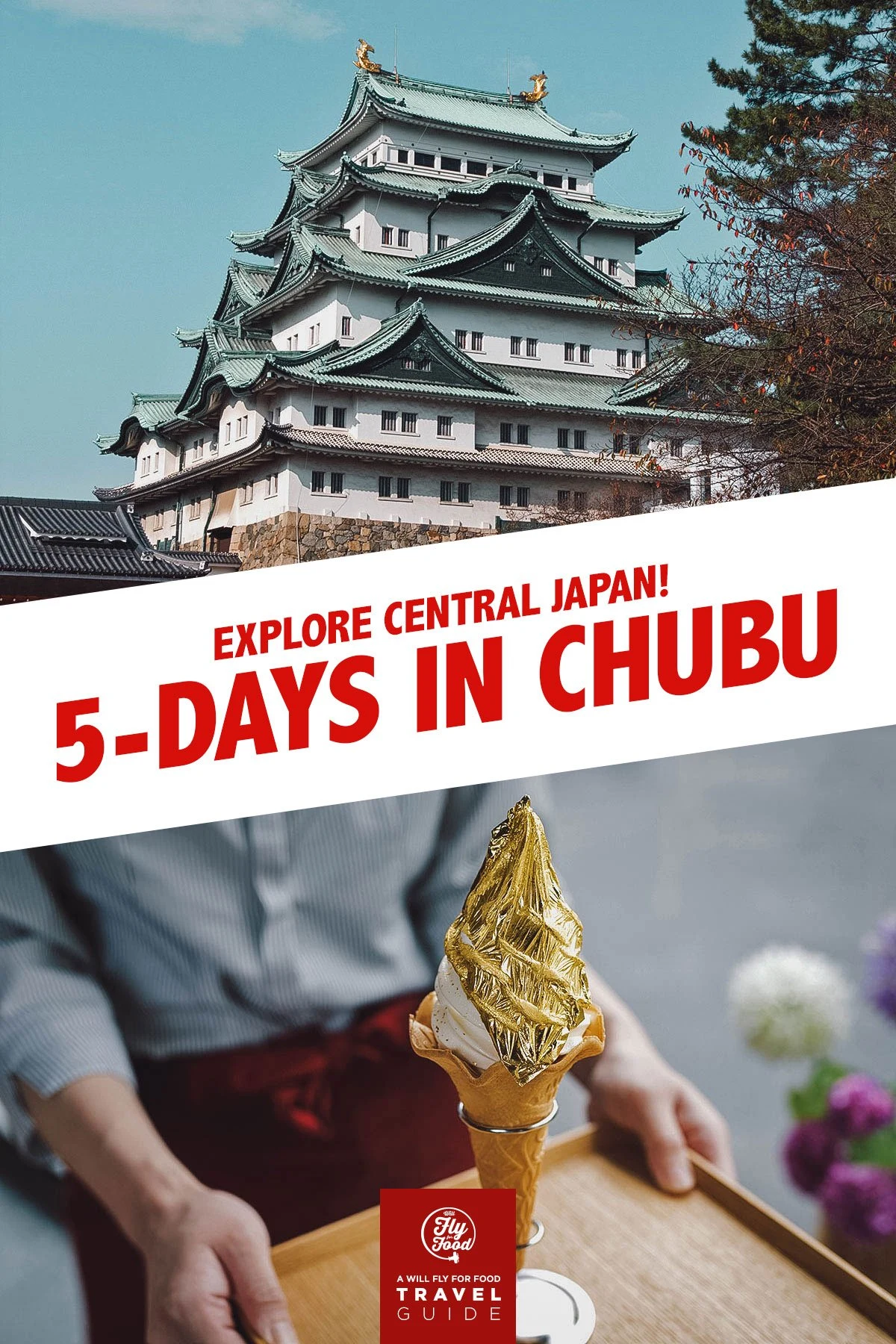
WHAT IS THE CHUBU REGION?
Chubu is a region in Central Japan. It’s located in the central region of Honshu, Japan’s main island, between the Kanto and Kansai regions. It consists of nine prefectures – Aichi, Gifu, Fukui, Shizuoka, Yamanashi, Nagano, Toyama, Ishikawa, and Niigata.
The Chūbu region is a geographically diverse area that’s bordered by the Sea of Japan to the north and the Pacific Ocean to the south. It’s home to the Japanese Alps and Mount Fuji, the tallest mountain and the most iconic landmark in Japan.
TAKAYAMA-HOKURIKU AREA TOURIST PASS
The Takayama-Hokuriku Area Tourist Pass is a JR Pass (Japan Rail) that gives you unlimited travel in the Chubu region for five (5) consecutive days. You can use it to travel by JR train (and participating bus lines) between major cities and tourist destinations in the region like Nagoya, Takayama, Kanazawa, Shirakawa-go, and Gokayama.
If you’re entering Japan through the Kansai region, then you’ll be pleased to know that the pass is also valid for travel to the Chubu region from Osaka, Kyoto, and Kansai airport. You can refer to this article on the Takayama-Hokuriku Pass for more information and to purchase a pass.
HOW TO SPEND 5 DAYS IN THE CHUBU REGION
There are many ways to explore Central Japan. This 5-day Chubu itinerary focuses on the western half of the Chubu region and takes you to some of the top destinations and restaurants in Aichi, Gifu, Toyama, Ishikawa, and Fukui. You can jump to the location map at the bottom of this article to get a better feel for the region.
CHUBU ITINERARY QUICK GLANCE
| DAY ONE: Nagoya, Gifu, Mino (Aichi and Gifu prefectures) • Nagoya Castle • Kawaramachi Izumiya (Lunch) • Kawara-machi Historic Street • Udatsu Wall Historical District |
| DAY TWO: Shirakawa-go (Gifu prefecture) • Shirakawa-go • Irori (Lunch) |
| DAY THREE: Toyama (Toyama prefecture) • Toyama Port • Iwasehama Beach • Shiroebi-tei or Shinminato Kittokito Fisherman’s Wharf (Lunch) • Tonami Tulip Park |
| DAY FOUR: Kanazawa (Ishikawa prefecture) • Kenroku-en • Kazuemachi Chayagai • Higashi Chayagai • Hakuichi • Omicho Market (Lunch) • Nagamachi Samurai District • Rojo Park |
| DAY FIVE: Fukui (Fukui prefecture) • Asuwa River Cherry Blossom Row • Tojinbo • Awara Onsen • Yukemuri Yokocho (Dinner) |
CHUBU ITINERARY DAY 1: Nagoya, Gifu, Mino
The easiest way to explore the Chubu region is to enter Japan through Chubu Centrair International Airport (Central Japan International Airport) in Nagoya City. Located in Aichi prefecture, Nagoya is one of the largest cities in Japan. It doesn’t get as much attention as Tokyo, Osaka, or Kyoto but curious travelers will find many interesting tourist attractions in Nagoya like Toyota Techno Museum, Nagoya Castle, and Atsuta Shrine.
Nagoya Castle
What better way to start your trip to the Chubu region than by visiting a Japanese castle? Built during the Edo period, Nagoya Castle was at one point one of the biggest castles in Japan. Unfortunately, much of it was destroyed during the air raids of World War II.
The good news is that Nagoya Castle has been undergoing total reconstruction. Much of it will be closed till its unveiling but the castle grounds and Honmaru Palace remain open to visitors.
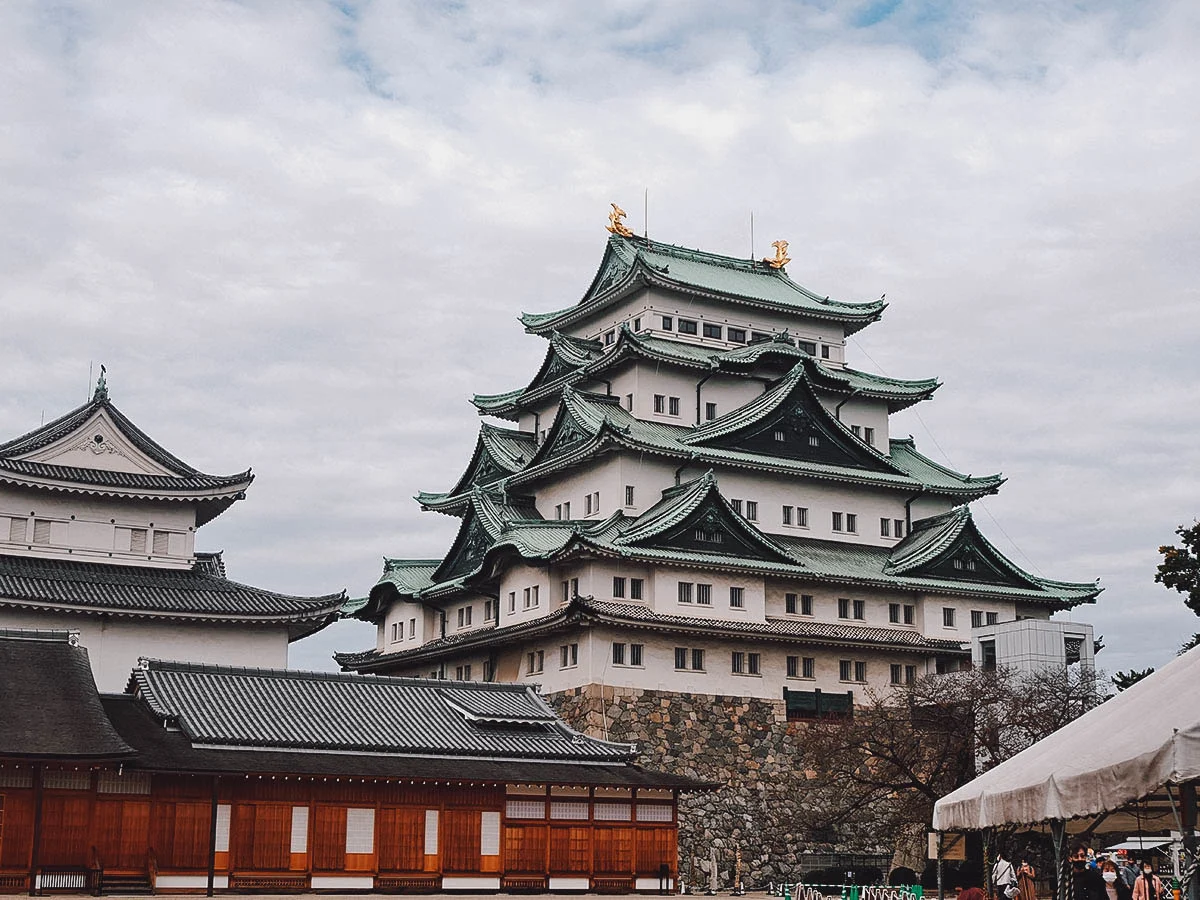
Operating Hours: 9AM-4:30PM, daily
Admission: JPY 500
Closest Station: Sengencho Station or Shiyakusho Station
Estimated Time to Spend: About 1-1.5 hrs
Kawaramachi Izumiya (LUNCH)
After visiting Nagoya Castle, use your Takayama-Hokuriku Pass and take a JR train to Gifu station. From the station, you can walk or take a local bus to Kawara-machi. But before you explore this historical district in Gifu City, we recommend having lunch first.
Kawara-machi is situated by the Nagara River and is famous for its cormorant fishing. One of their most famous local catches is ayu or sweetfish, which you can enjoy at one of the many restaurants in town. One of the best places to try this local specialty is at Kawaramachi Izumiya.
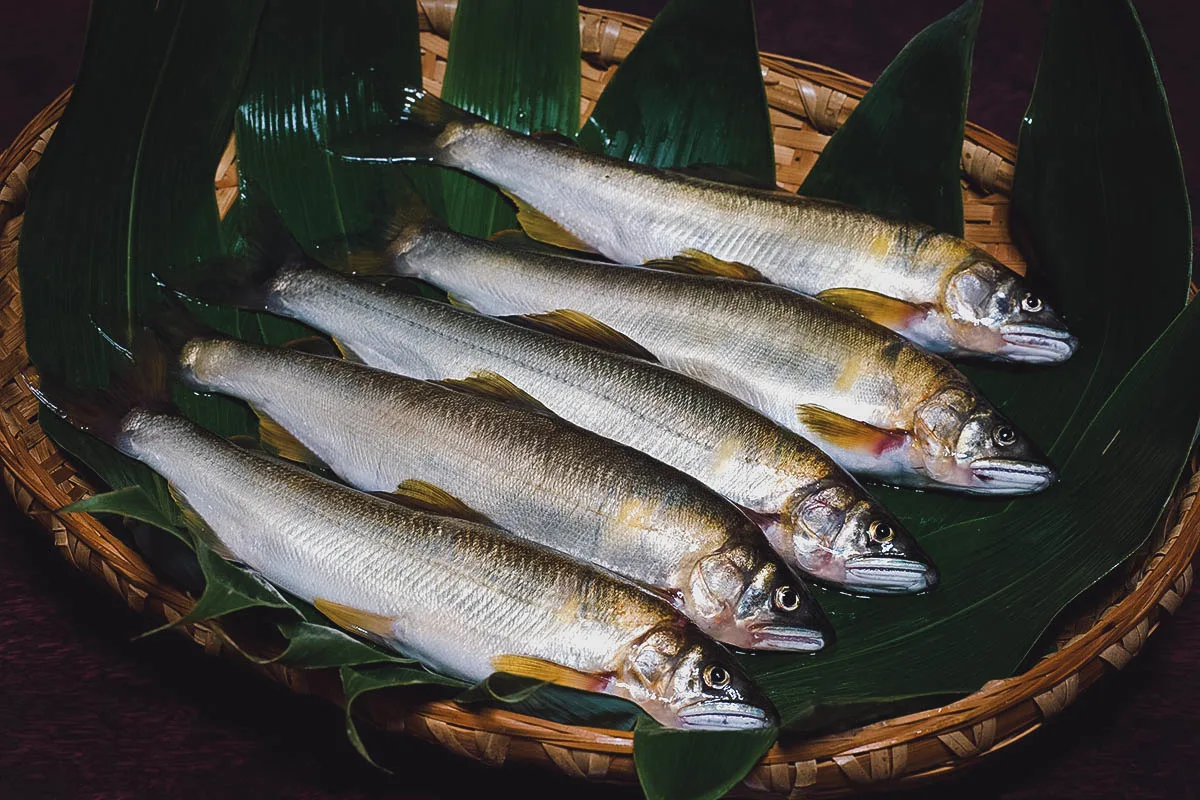
For the full ayu experience, then you may want to go for a full course meal. If you aren’t that hungry, then you should at least try the charcoal-grilled ayu.
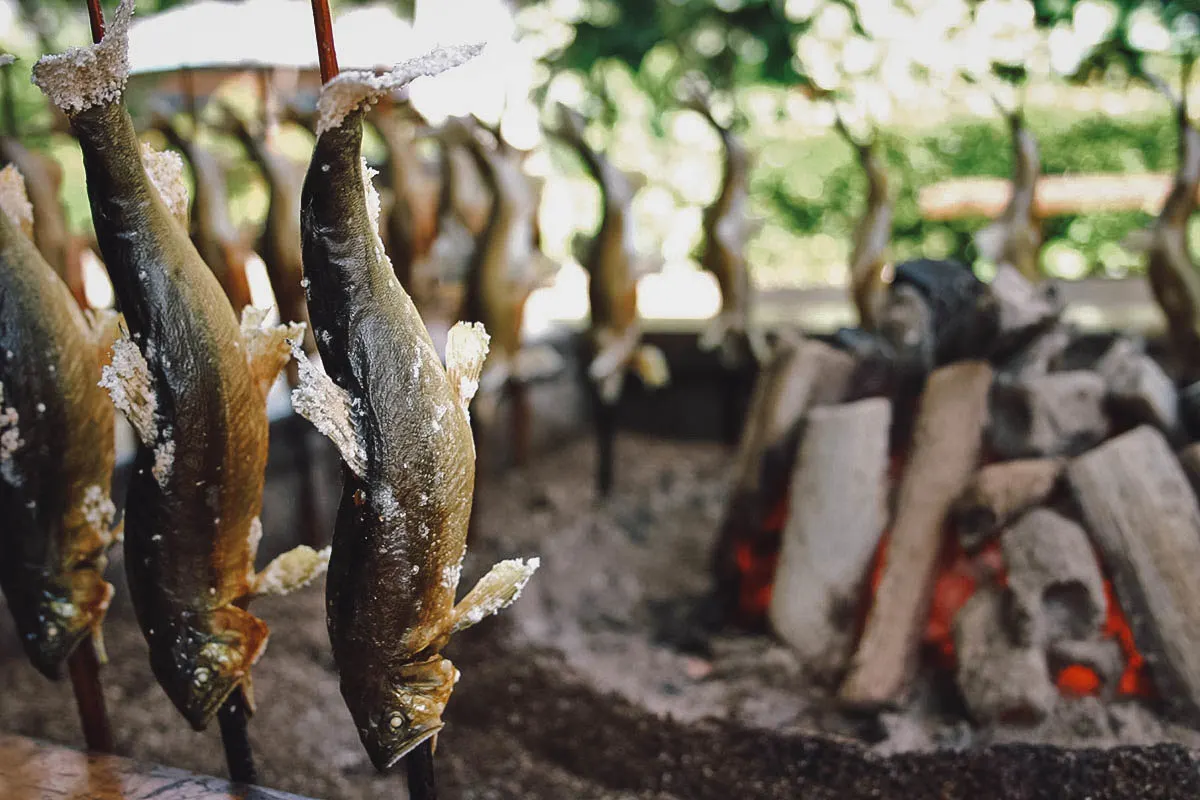
Operating Hours: 11:30AM-2PM, 5-9PM, Thurs-Tue (closed Wednesdays)
Expect to Spend: Starts at JPY 3,240 for the course meal
Nearest Bus Stop: Zaimoku-cho
Kawara-machi Historic Street
After lunch, you can spend the afternoon exploring Kawara-machi. Kawara-machi is an historic district known for its traditional wooden houses and shops. It’s an atmospheric area that’ll make you feel like you had just stepped into Japan’s Edo period.
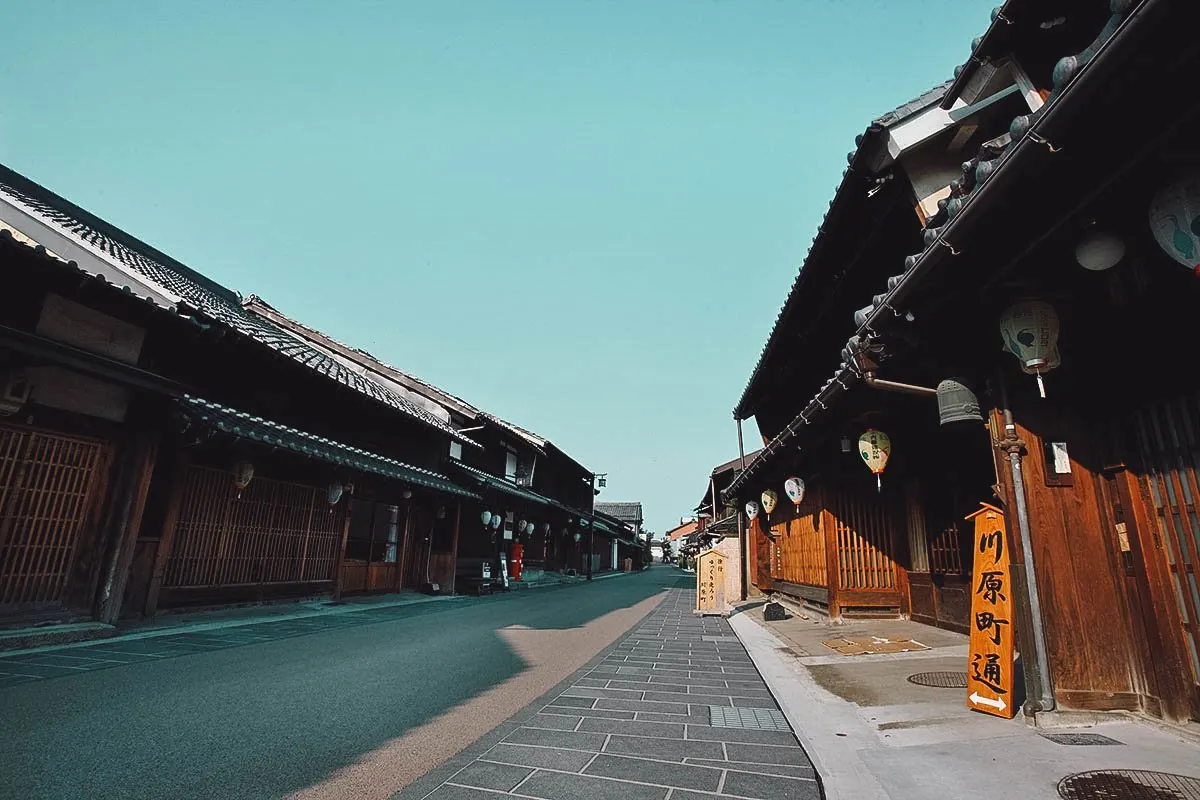
Many of the houses in Kawara-machi district have been converted into restaurants, cafes, and souvenir shops. You can easily spend a few hours here admiring the architecture and perusing all the interesting items for sale.
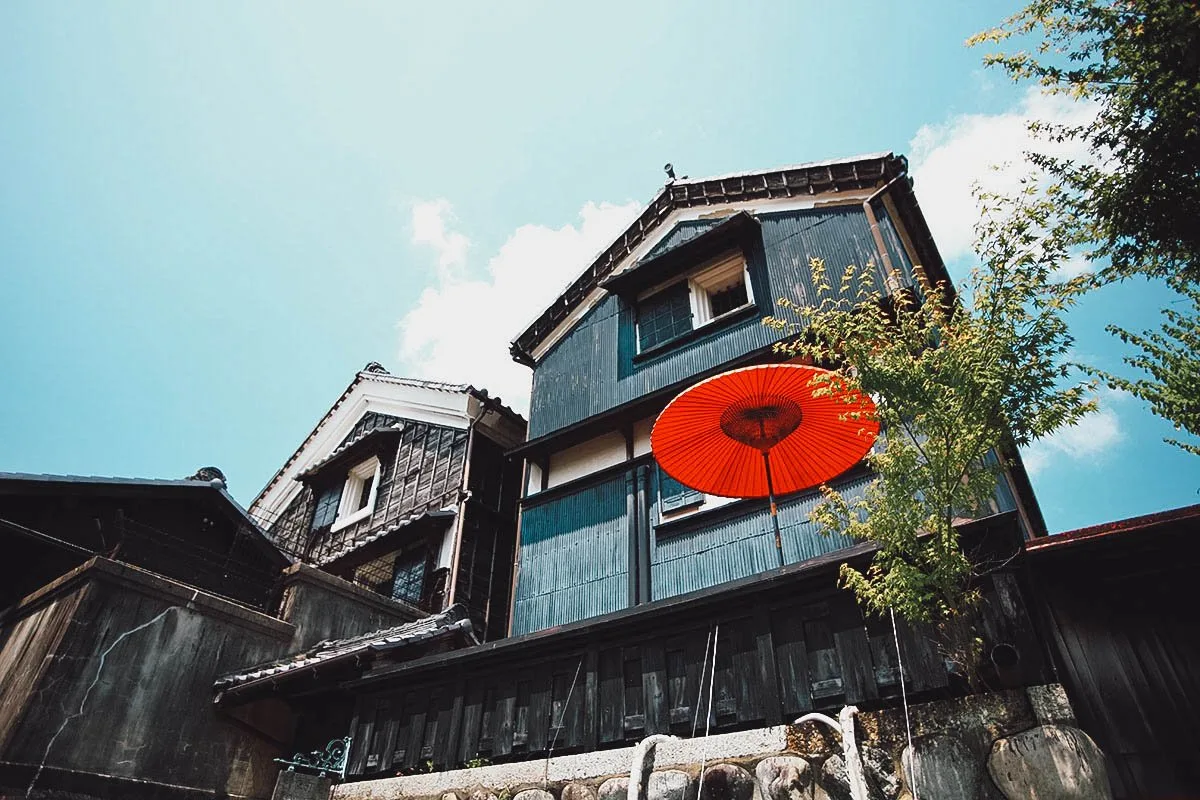
Here’s a look at Kawara-machi at night. Pretty right?
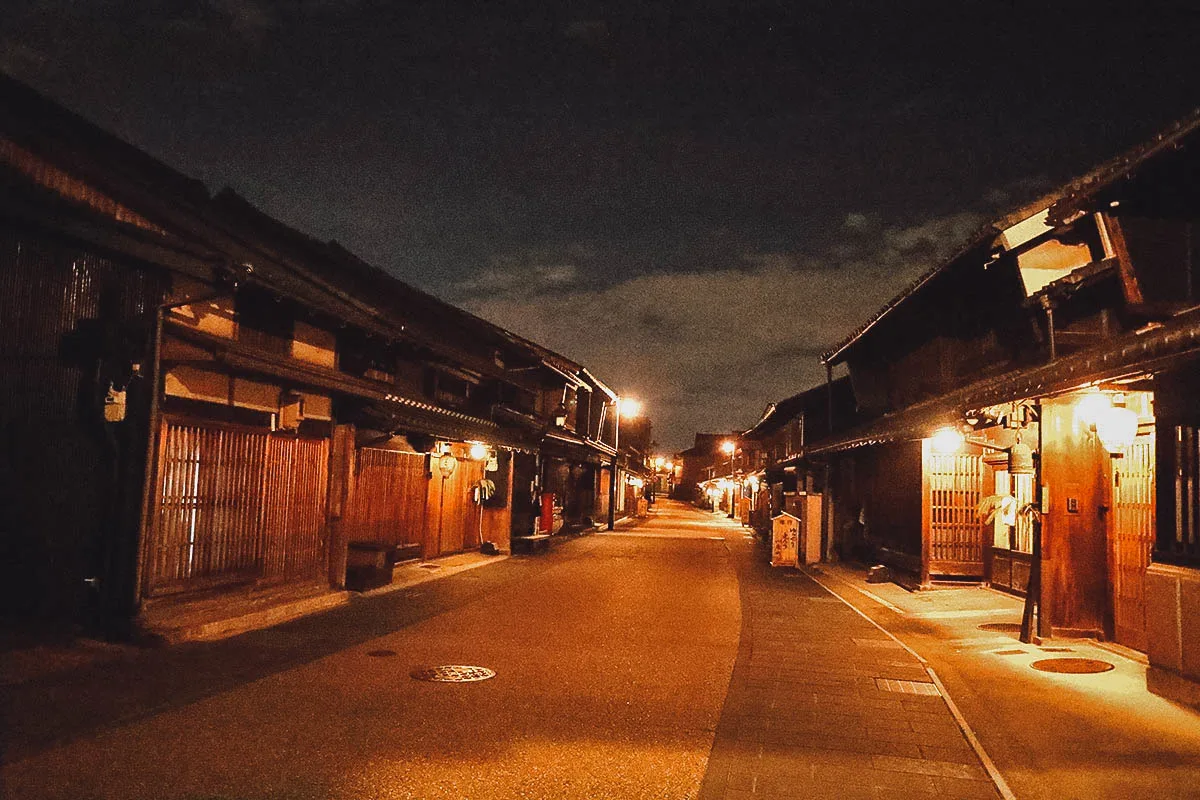
Estimated Time to Spend: About 2-3 hrs
Udatsu Wall Historical District
After exploring Kawara-machi, you can use your Takayama-Hokuriku Pass and take the JR train from Gifu to Mino-Ota station. From Mino-Ota, you can then take a local train to Udatsu wall historical district in Mino City. Similar in feel to Kawara-machi, Udatsu wall historical district is an atmospheric area that was once a lively merchant district during Japan’s Edo period.
Mino City flourished during the Edo period from the sale of washi, a traditional type of Japanese paper. It’s for this reason why udatsu walls can still be found in this area. Washi raised the risk of fire so udatsu walls were built to help prevent the spread of fire from house to house.
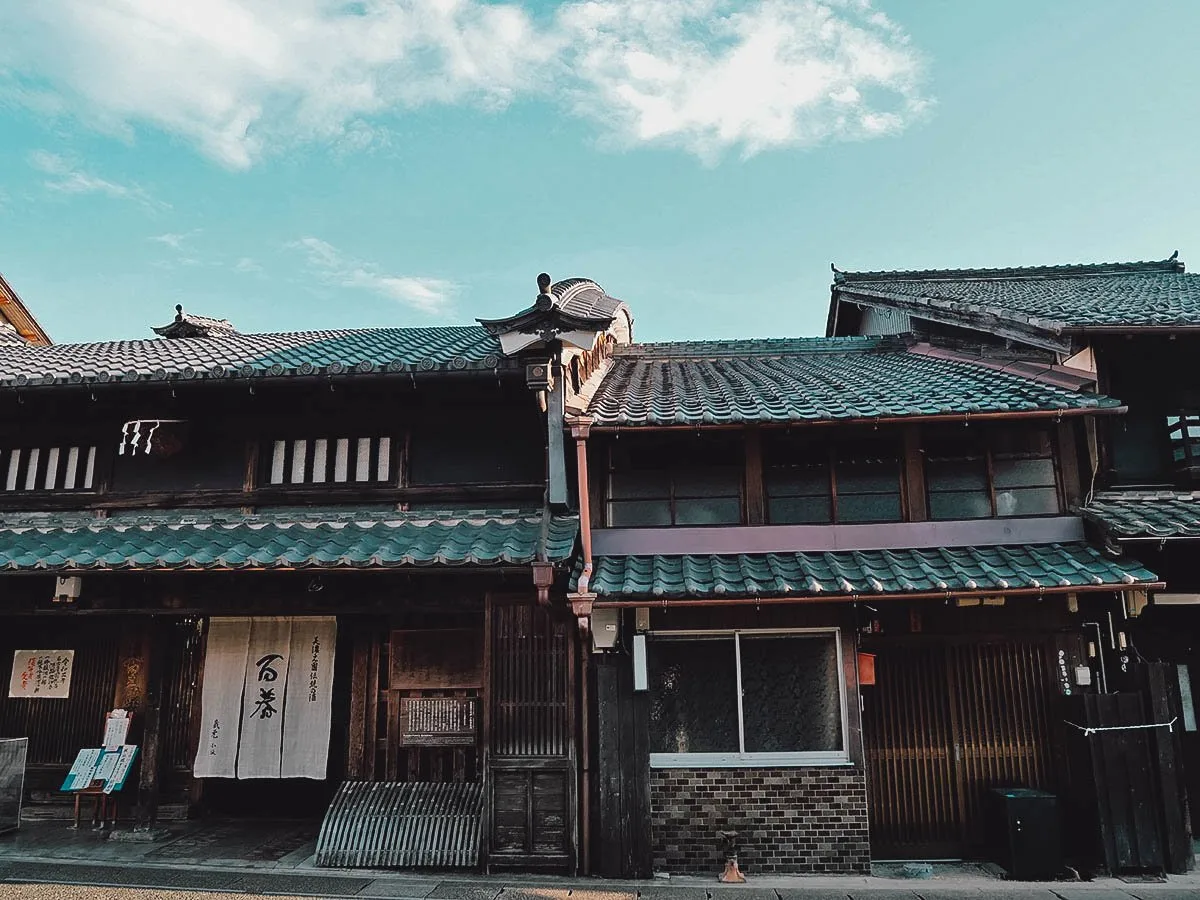
Here’s a shop selling Japanese lanterns made from Mino washi paper.
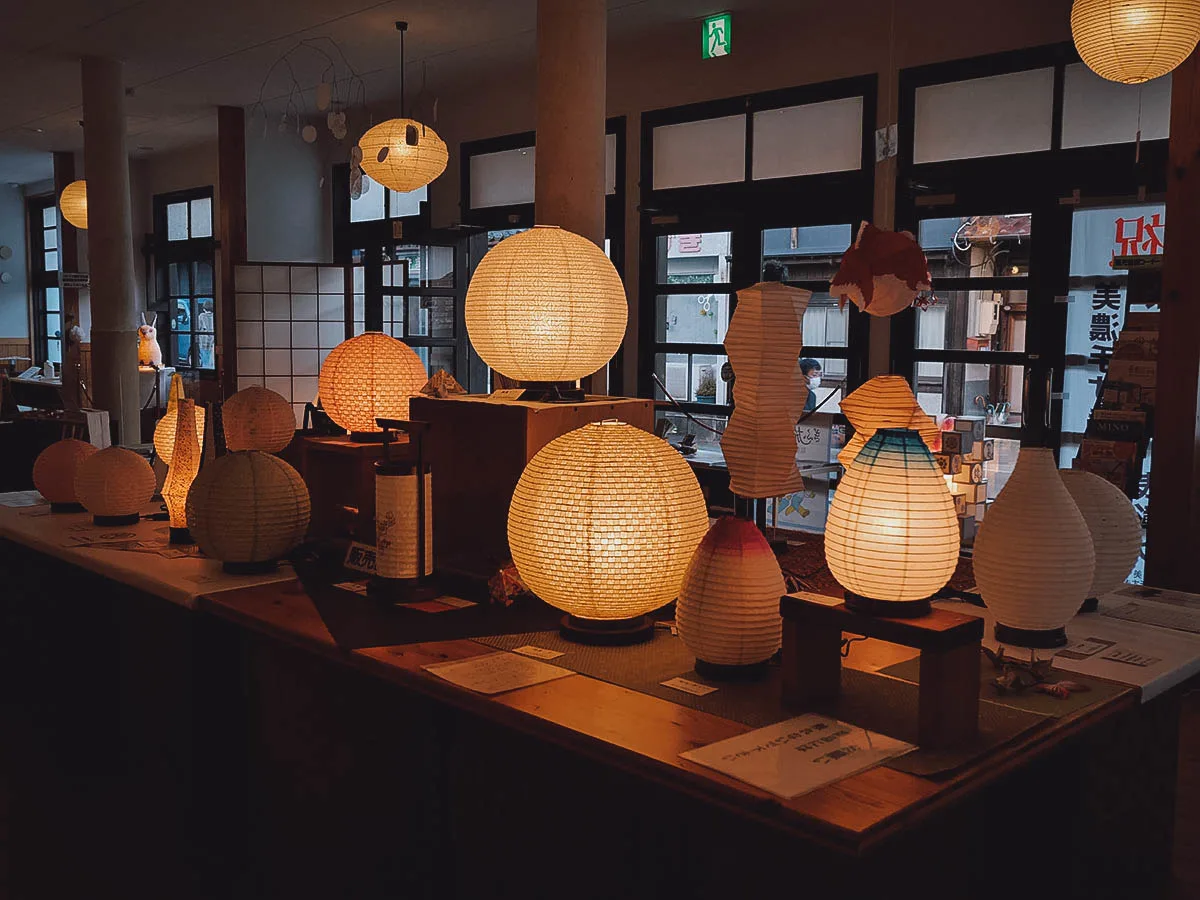
Udatsu wall historical district at night. So lovely!
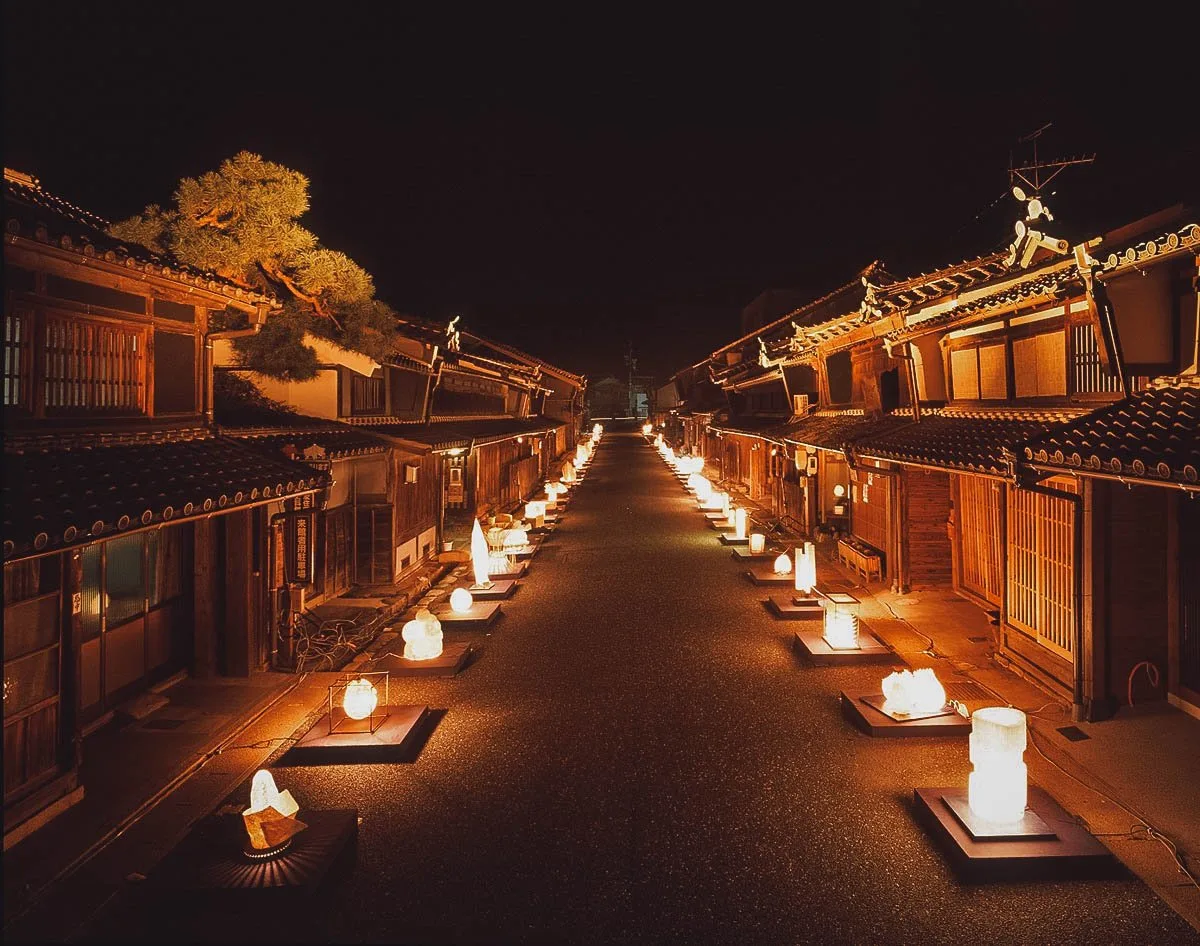
Closest Metro Station: Umeyama Station
Estimated Time to Spend: About 1-2 hrs
CHUBU ITINERARY DAY 2: Shirakawa-go
On your second day in the Chūbu region, use your Takayama-Hokuriku Pass to travel from Mino-Ota station to Hida Takayama in Gifu prefecture. To maximize your day, we suggest starting as early as possible and taking the Limited Express Hida JR train to get to Takayama in under 2 hours.
From Takayama station, you can then use your Takayama-Hokuriku Pass to take the 1-hr Nohi bus ride to Ogimachi Village in Shirakawa-go.
Shirakawa-go (UNESCO World Heritage Site)
Ogimachi Village in Shirakawa-go is gorgeous. Famous for its traditional gassho-zukuri farmhouses, it’s one of the most visited UNESCO World Heritage Sites in Japan. These houses are known for their slanted thatched gable roofs built at a steep angle to allow heavy snow to easily fall off in winter.
Ogimachi is beautiful at any time of the year but it’s especially popular in winter when the village is covered in a thick blanket of snow. Spring is a great time to visit as well for the cherry blossoms.
Check out our Shirakawa-go travel guide if you plan on visiting this UNESCO World Heritage Site in winter.
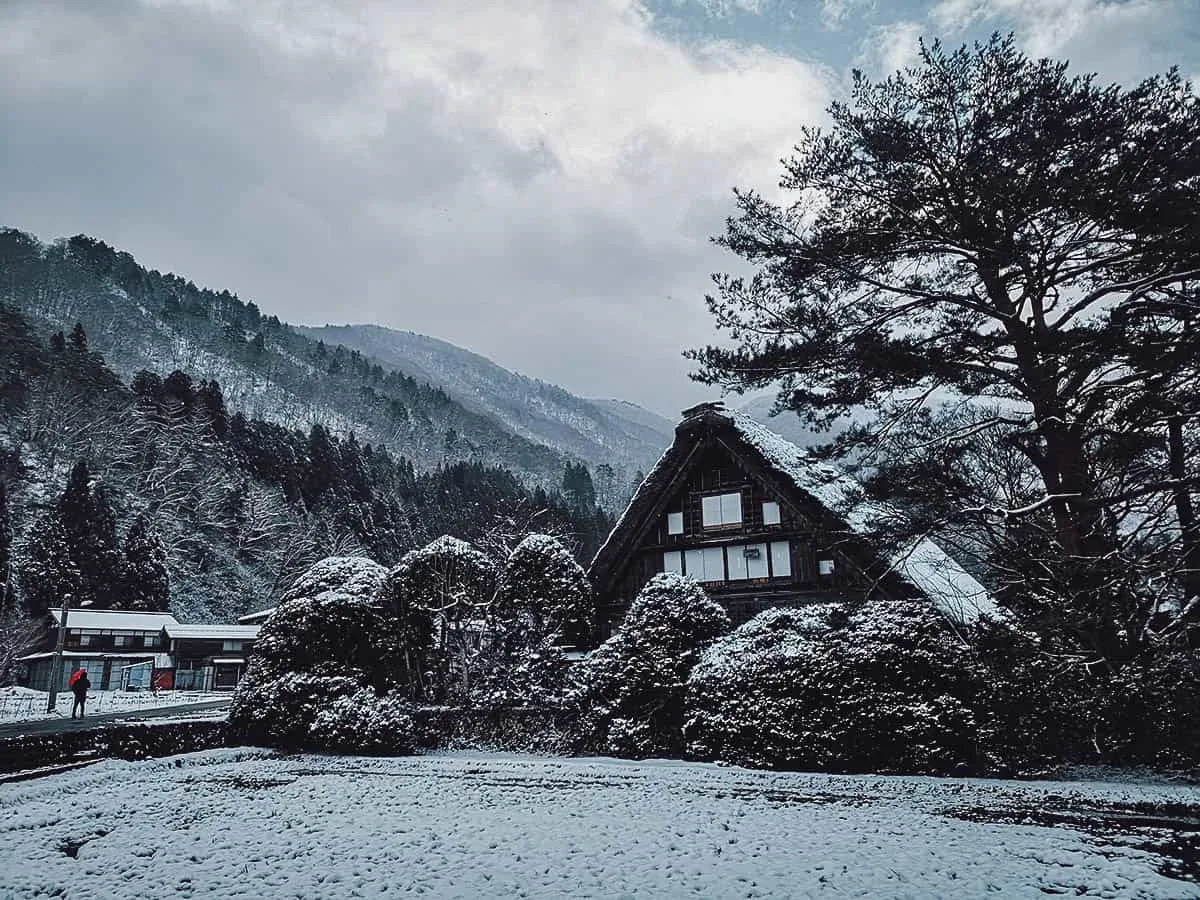
I’ve been to Ogimachi twice, once when it was covered in snow. The snow added a touch of magic to the village. It made it look like a winter wonderland, but as you can see below, it was still beautiful without it.
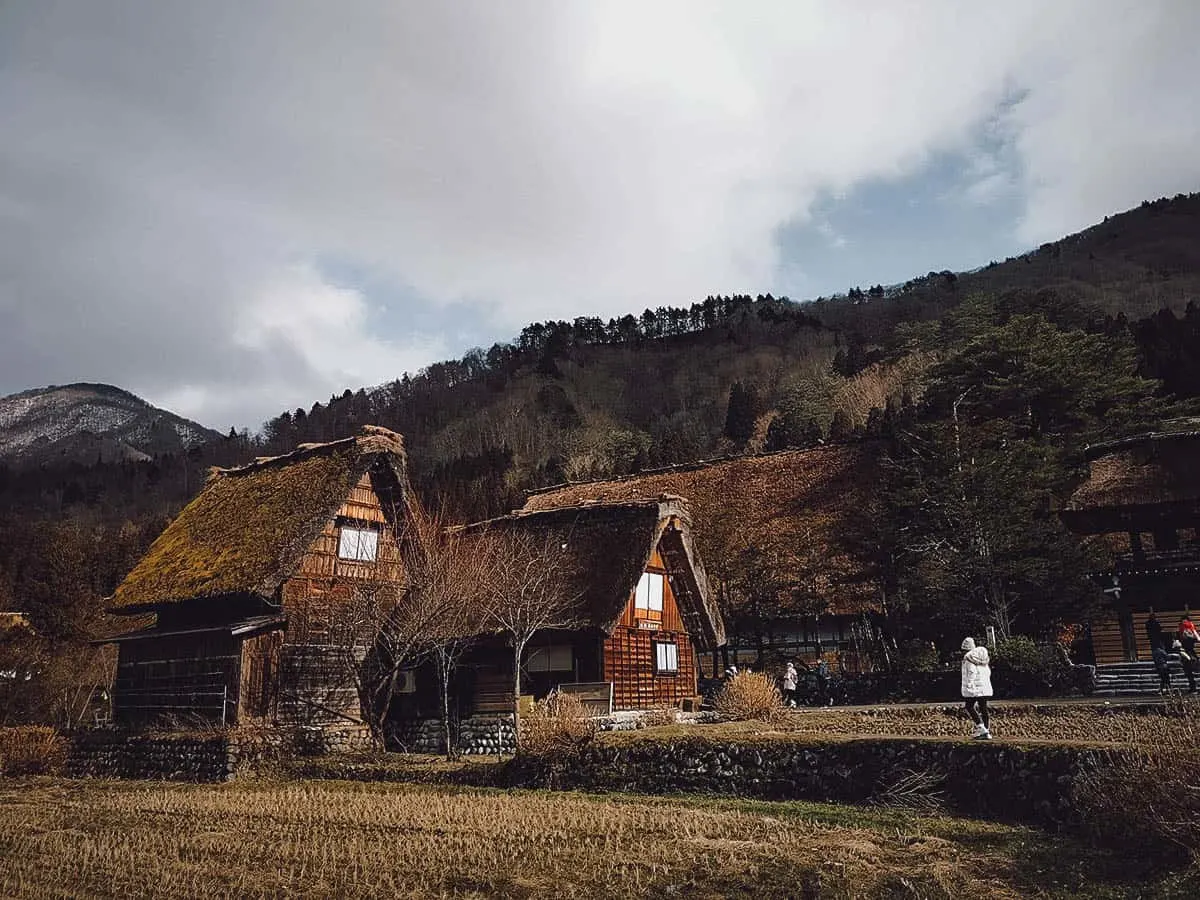
Admission: FREE to enter the village but some houses may charge an admission fee
Estimated Time to Spend: At least half a day
Irori (LUNCH)
One of the most delicious local dishes you can have in Gifu prefecture is Hida Beef. It’s a prized beef brand that many locals consider to be among the best in Japan, even better than Kobe Beef!
There are a few restaurants and food stands where you can try Hida Beef in Ogimachi, but I suggest trying it at the Irori restaurant. Located inside a gassho-zukuri farmhouse, it’s the ideal setting for lunch in Shirakawa-go.
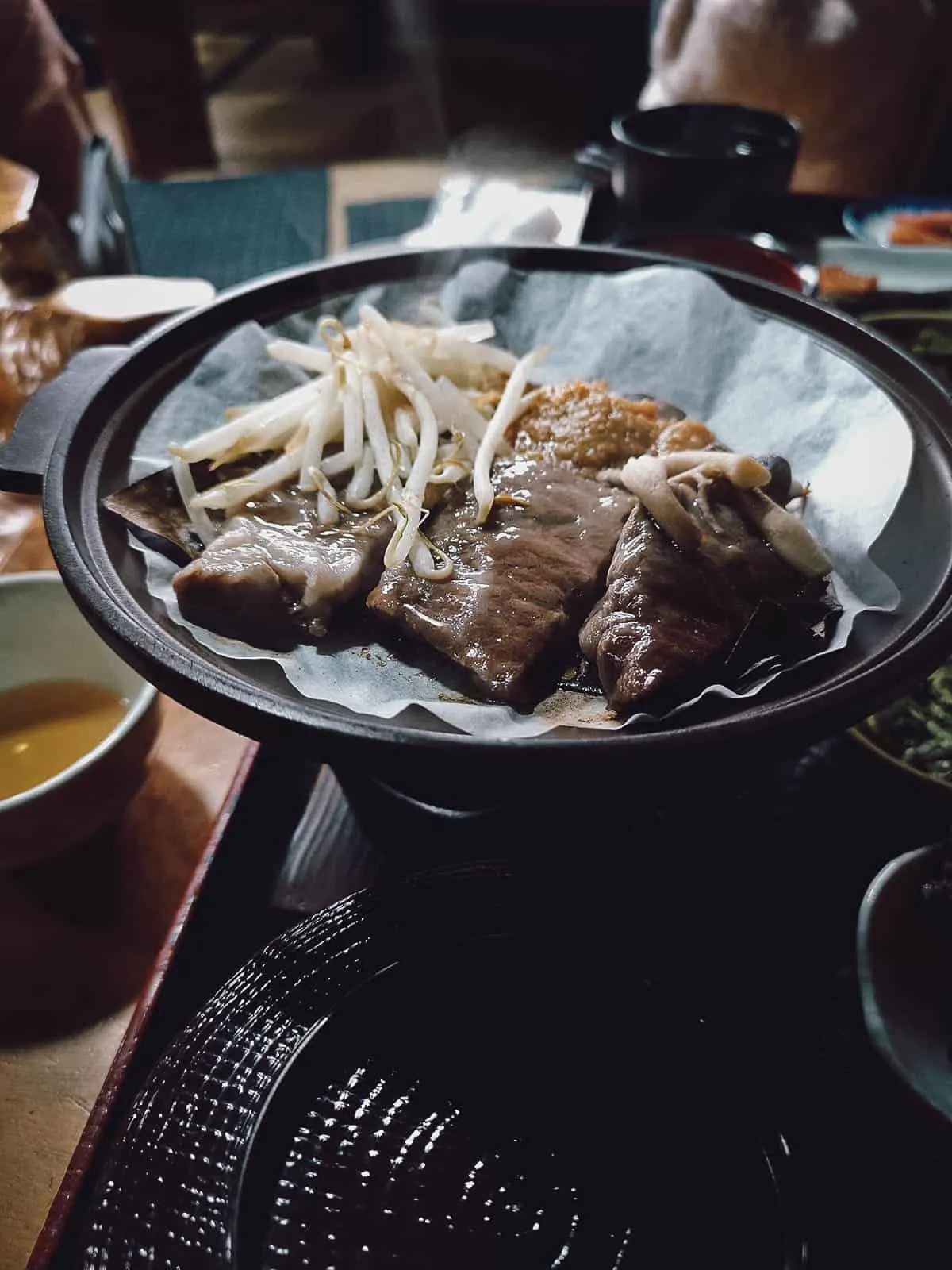
Operating Hours: 10AM-2PM (irregular holidays)
Expect to Spend: About JPY 1,650 for a Hida Beef set meal
We suggest using your Takayama-Hokuriku Pass and taking the Nohi bus to Toyama prefecture, your next stop in the Chubu region.
The last bus leaves Ogimachi at 5:50PM and gets you into Toyama station at 7:25PM. Be sure to confirm the schedule before making concrete plans.
CHUBU ITINERARY DAY 3: Toyama
Toyama City is the prefectural capital of Toyama, a prefecture that sits along the Sea of Japan coast. It’s a former castle town that marks the beginning of the Tateyama Kurobe alpine route, a famous route that takes you through the Northern Japan Alps.
Toyama Port
Start your day in Toyama by spending the morning in Toyama Port and Iwasehama Beach. The port is home to an observation tower that gives you sweeping views of the Sea of Japan. Entrance is free.
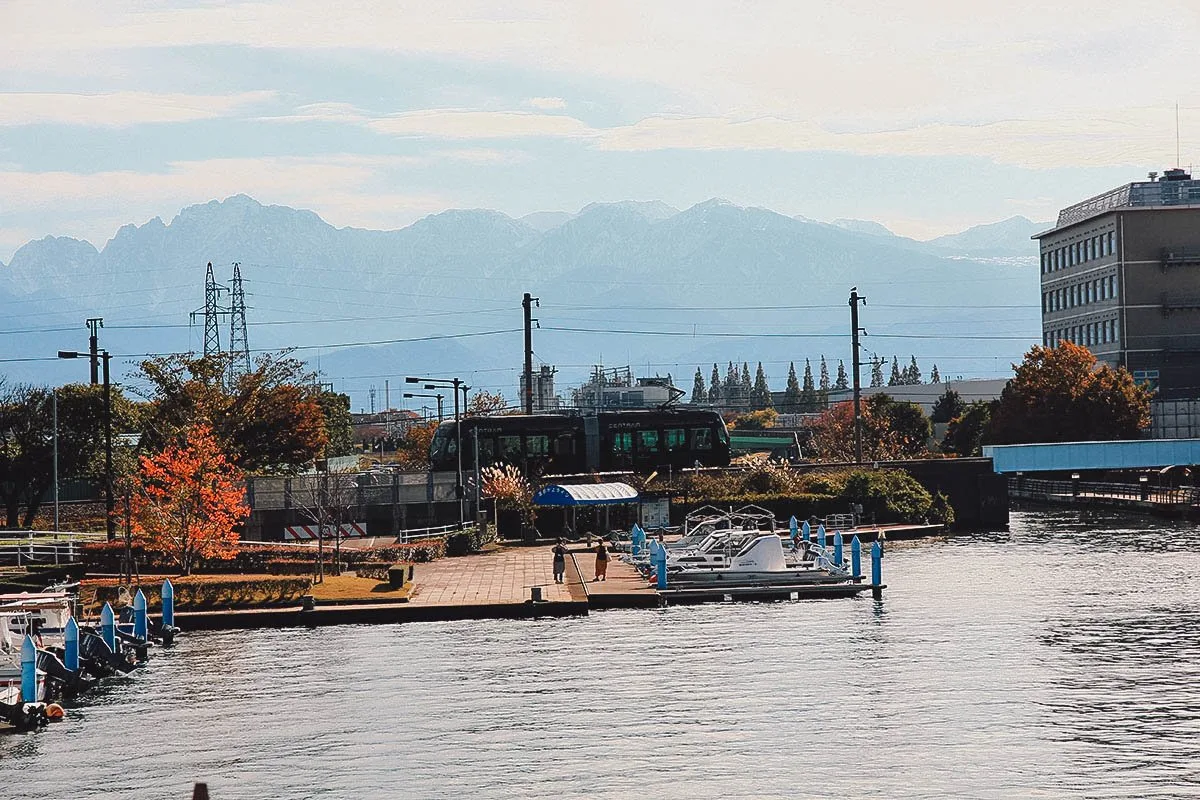
Iwasehama Beach
Iwasehama Beach town is an atmospheric town by the Japan Sea coast. Spend the day exploring the area before going back to Toyama station for lunch.
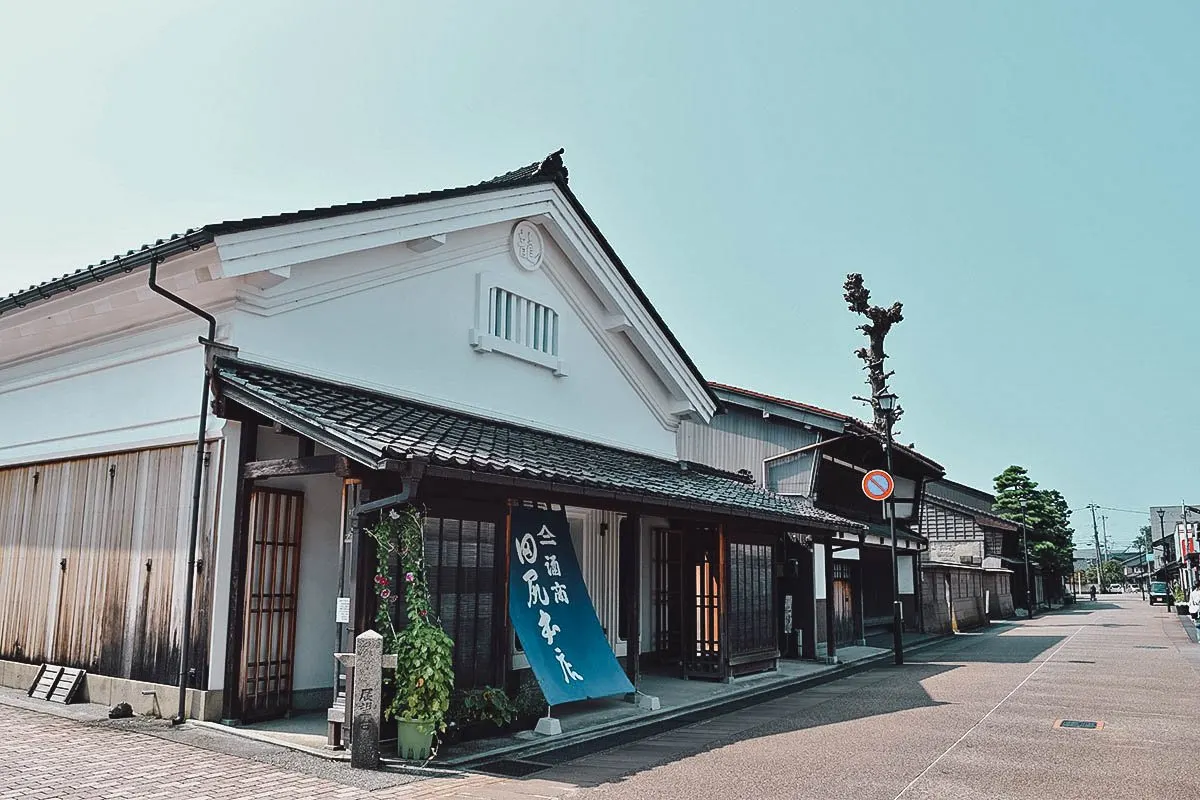
Iwasehama beach town was once a thriving coastal town that benefited from Kitamaebune trading. Kitamaebune was an Edo period shipping route that went from Osaka to the Hokuriku region to Hokkaido.
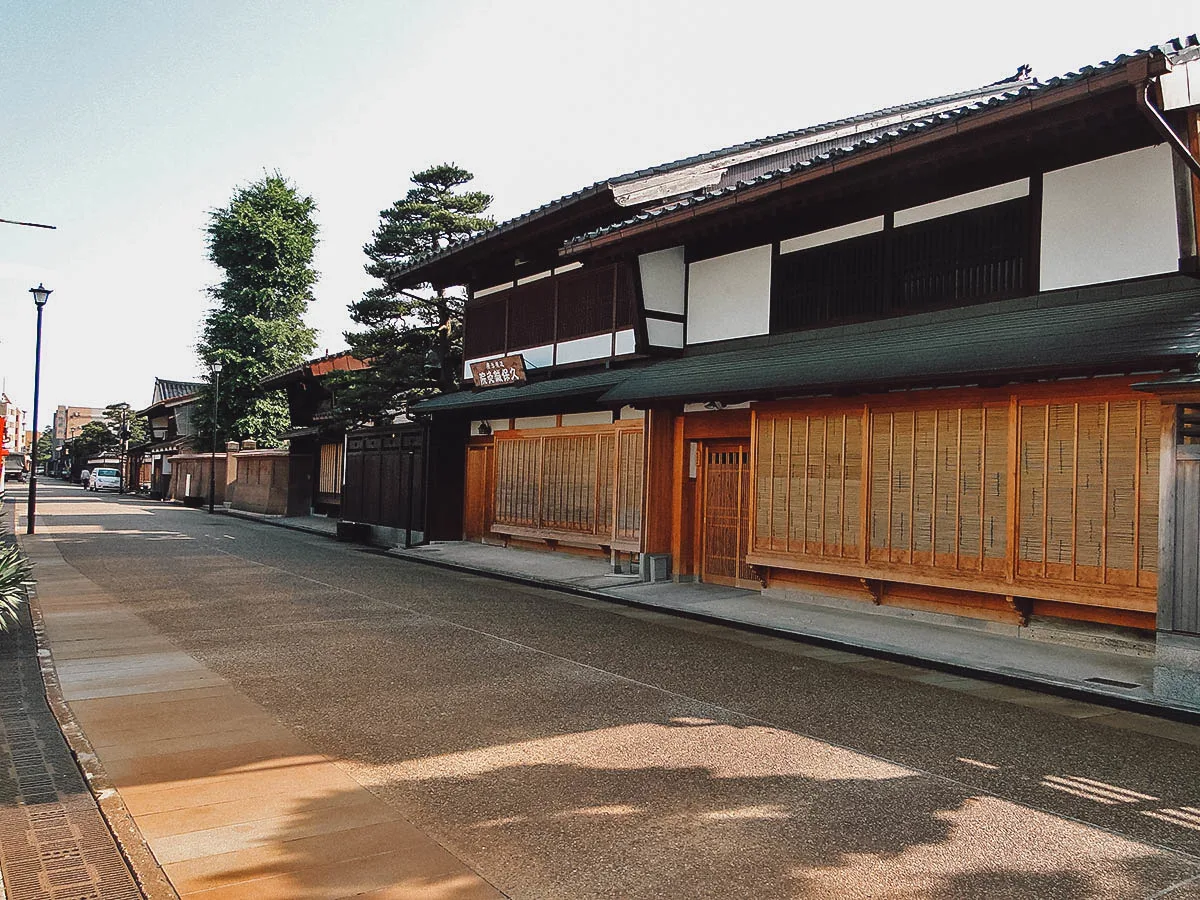
Closest Subway Station: Iwasehama Station
Estimated Time to Spend: About 2-3 hrs
Shiroebi-tei (LUNCH)
Being located by the Sea of Japan coast, this former castle town is known for its seafood. One of its most famous dishes is shiroi ebi or white shrimp. Referred to as the “Jewel of Toyama Bay”, shiroi ebi is known for its mild sweetness and rich flavor.
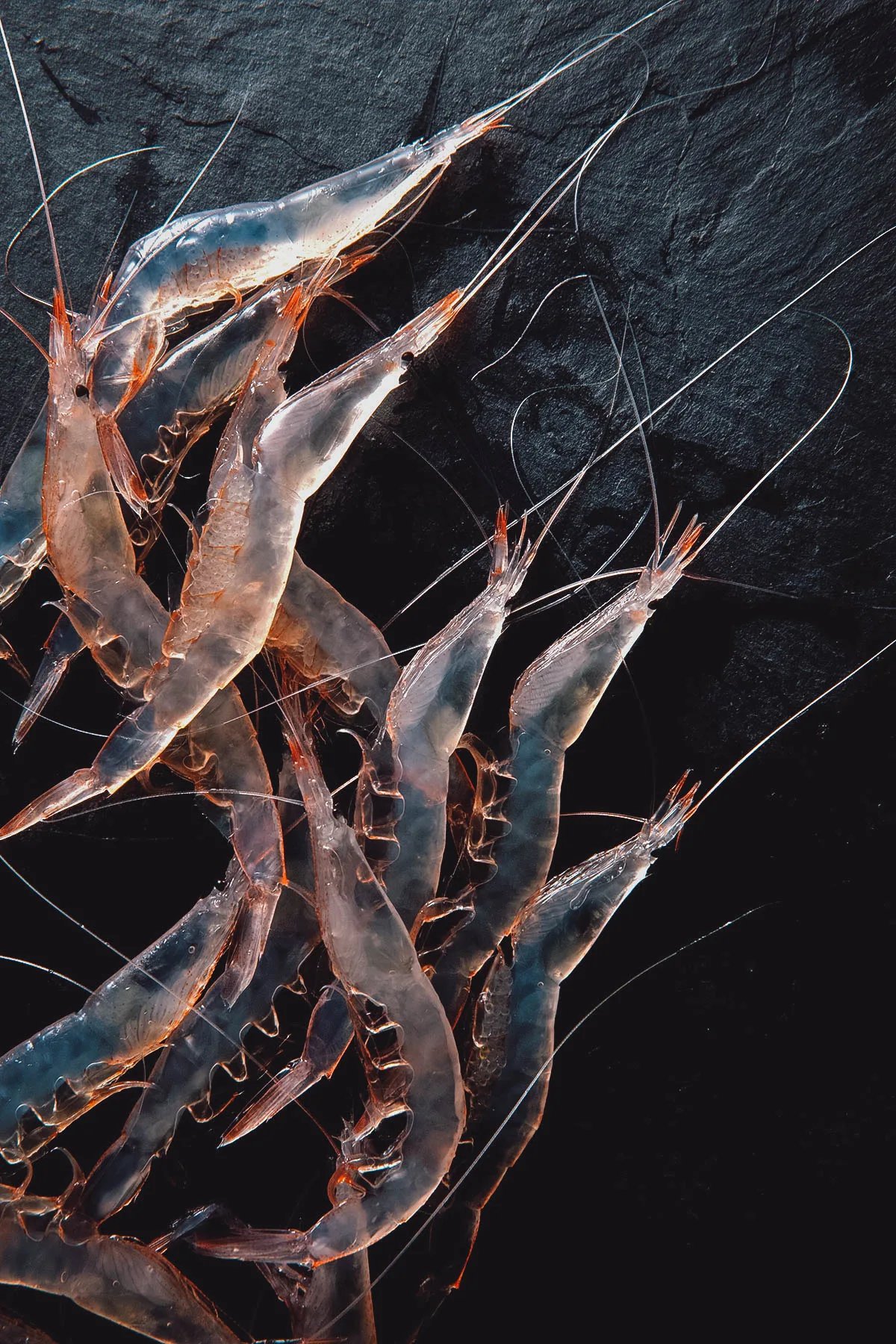
There are many restaurants that serve white shrimp in Toyama City but one of the most recommended is Shiroebi-tei. Located in Toyama station, you may want to try white shrimp served with Toyama koshihikari rice.
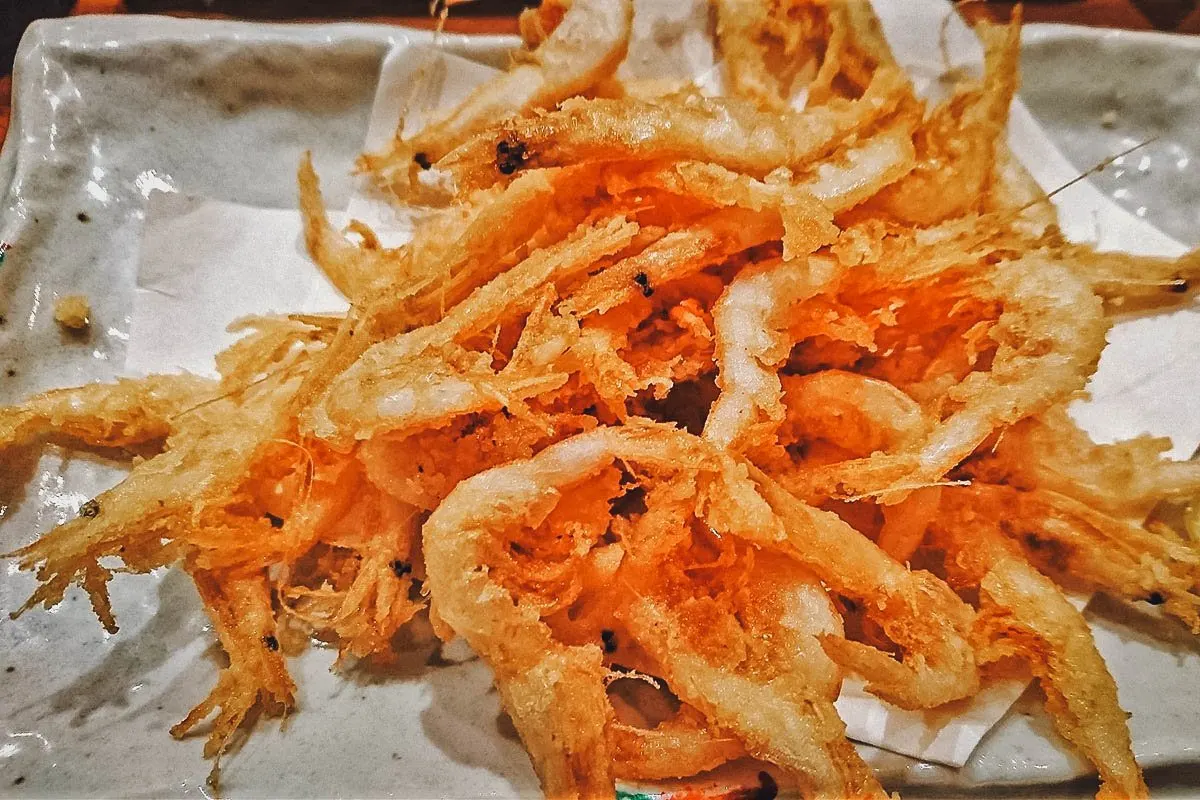
Operating Hours: 10AM-9:30PM, daily
Expect to Spend: About JPY 1,290 for a bowl of deep-fried shiroi ebi
Closest Station: Located inside Toyama Station
Shinminato Kittokito Fisherman’s Wharf (LUNCH)
As an alternative, another great place to have seafood in Toyama is Shinminato Kittokito Fisherman’s Wharf. It’s a market that offers many different types of seafood specialties like shiroi ebi, firefly squid, and beni-zuwai crab.
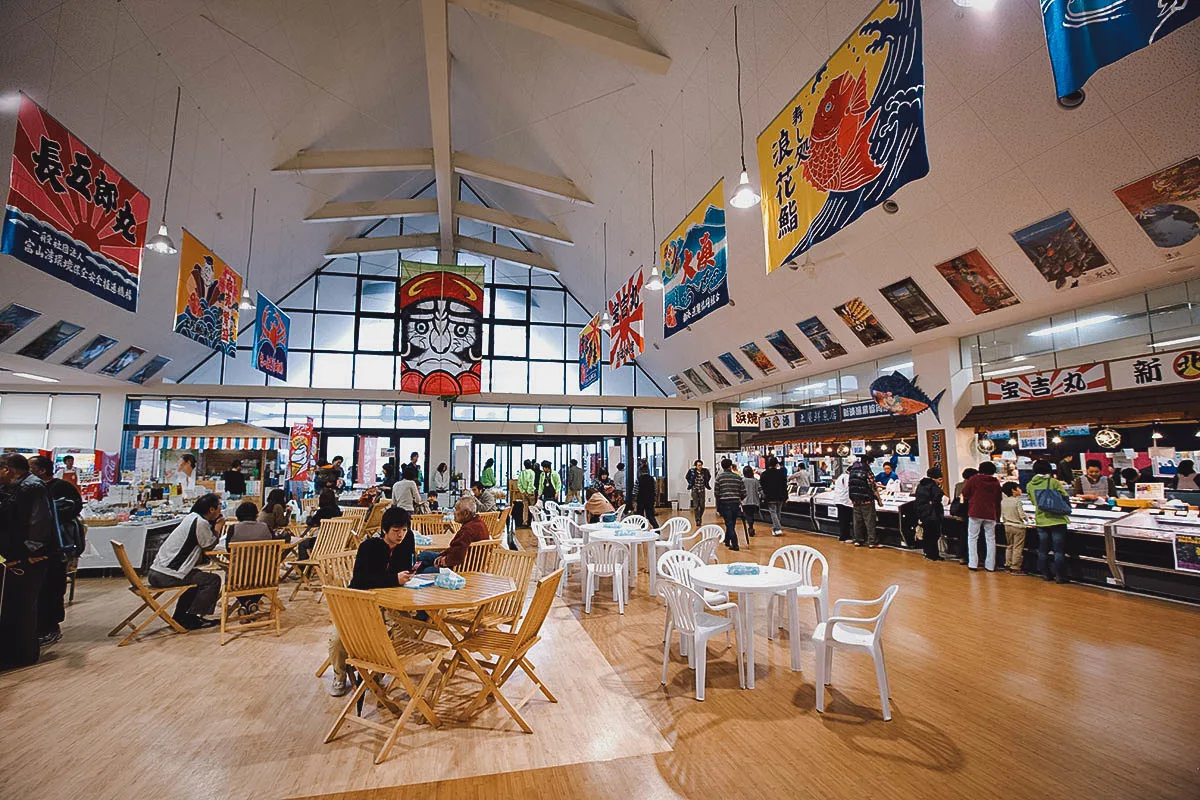
Like any Japanese seafood market, early morning auctions are held every day at Shinminato Kittokito Fisherman’s Wharf. But they also hold a second auction at 1PM, making it a great place to have lunch if you want to experience these seafood auctions in Japan.
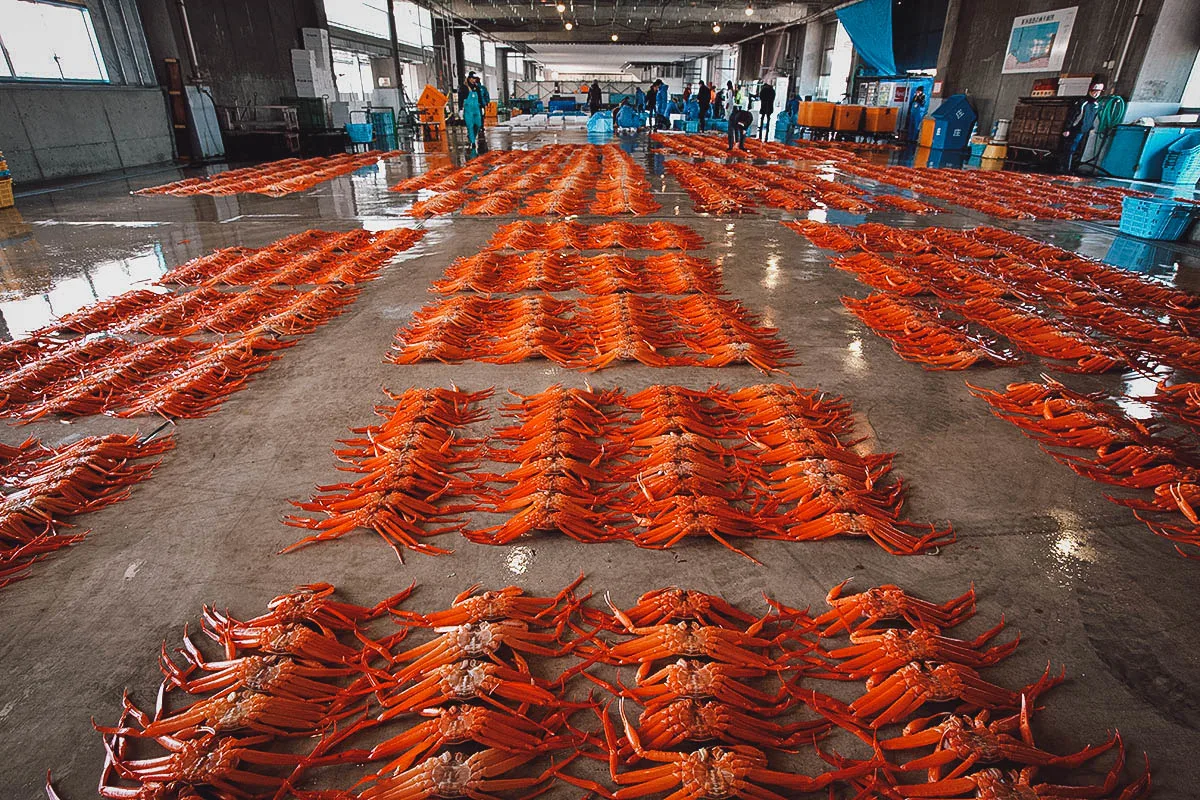
Operating Hours: 9AM-5PM, daily
Closest Metro Station: Kaiomaru Station
Tonami Tulip Park
If you visit the Chūbu region in spring, then a great place to visit is Tonami Tulip Park. The tulip is the prefectural flower of Toyama and Tonami City is one of the leading tulip producers in Japan.
Every spring, Tonami holds a tulip fair where you’ll find over 3 million tulips on display throughout the city. You can refer to the Tonami Tulip Fair website for more information.
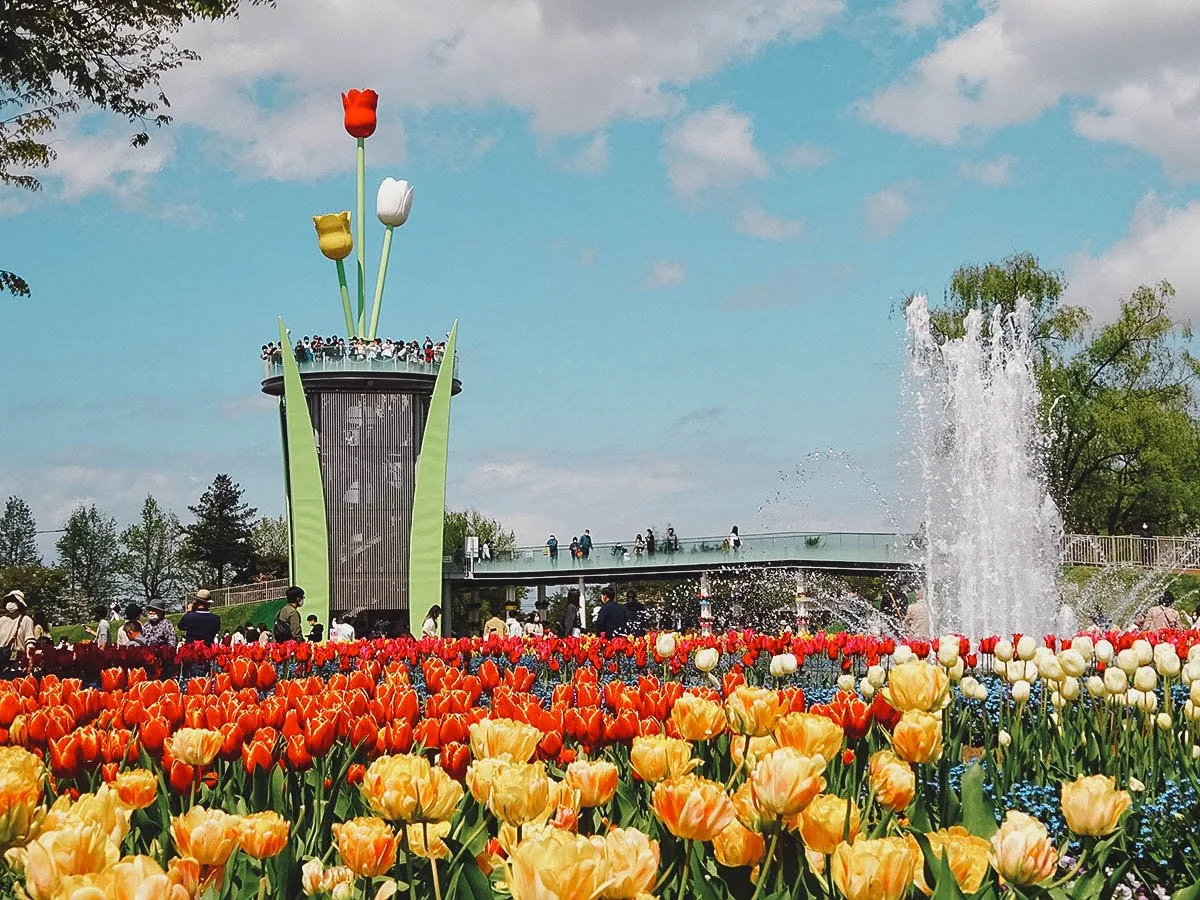
Row upon row of colorful tulips at Tonami Tulip Park
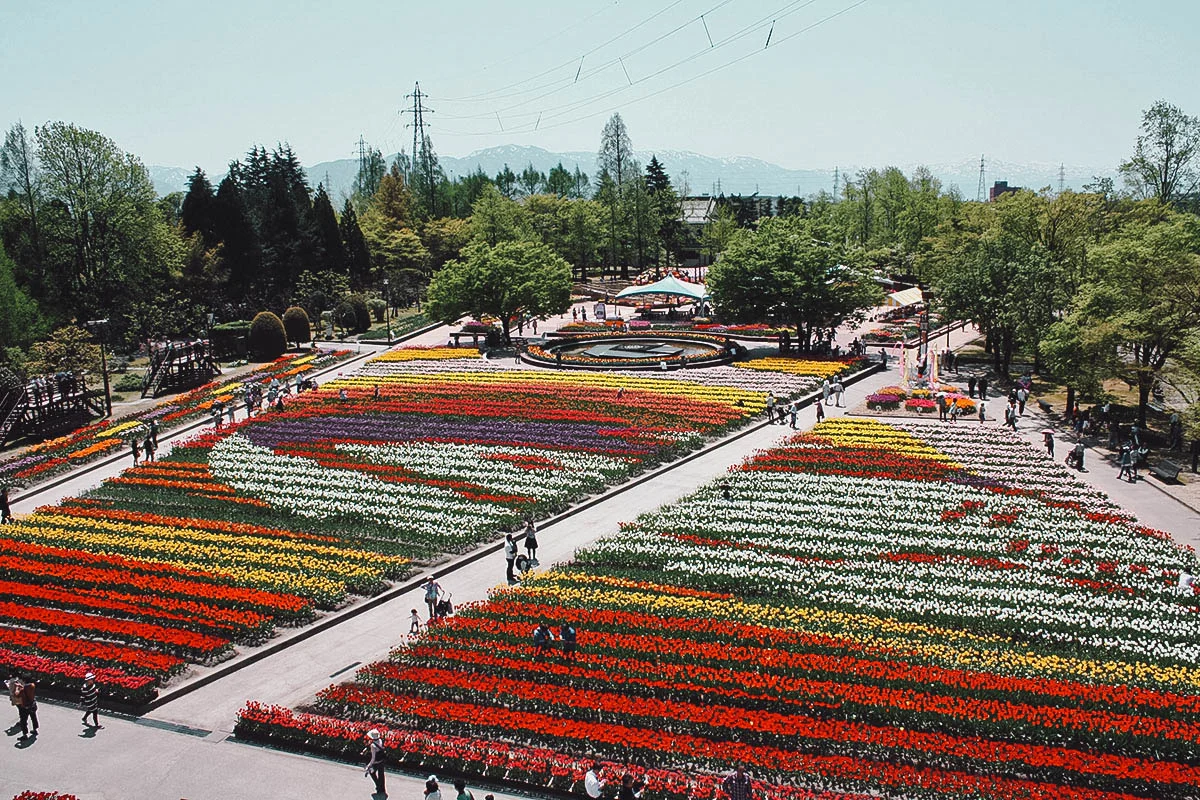
Operating Hours: 8:30AM-5:30PM, daily (during the fair)
Admission: JPY 1,300
Closest Metro Station: Tonami Station
Estimated Time to Spend: About 2-3 hrs
You’ll have an event-filled fourth day in the Chūbu region so we suggest using your Takayama-Hokuriku Pass and taking the JR Shinkansen to Kanazawa, the prefectural capital of Ishikawa. You can spend the night there to get an early start the following day.
CHUBU ITINERARY DAY 4: Kanazawa
As described, Kanazawa is the capital city of Ishikawa prefecture. Like Toyama, Ishikawa prefecture is situated by the Sea of Japan coast. Similar in feel to Kyoto, Kanazawa is known for its geisha districts, landscape gardens, and modern art exhibits at the 21st Century Museum of Contemporary Art.
Kenroku-en
You have a lot of ground to cover in Kanazawa so we recommend getting an early start. Your first stop is Kenroku-en, one of the three most famous landscape gardens in Japan. I’ve visited a few of these landscape gardens throughout Japan and Kenroku-en is definitely the most beautiful I’ve been to so far.
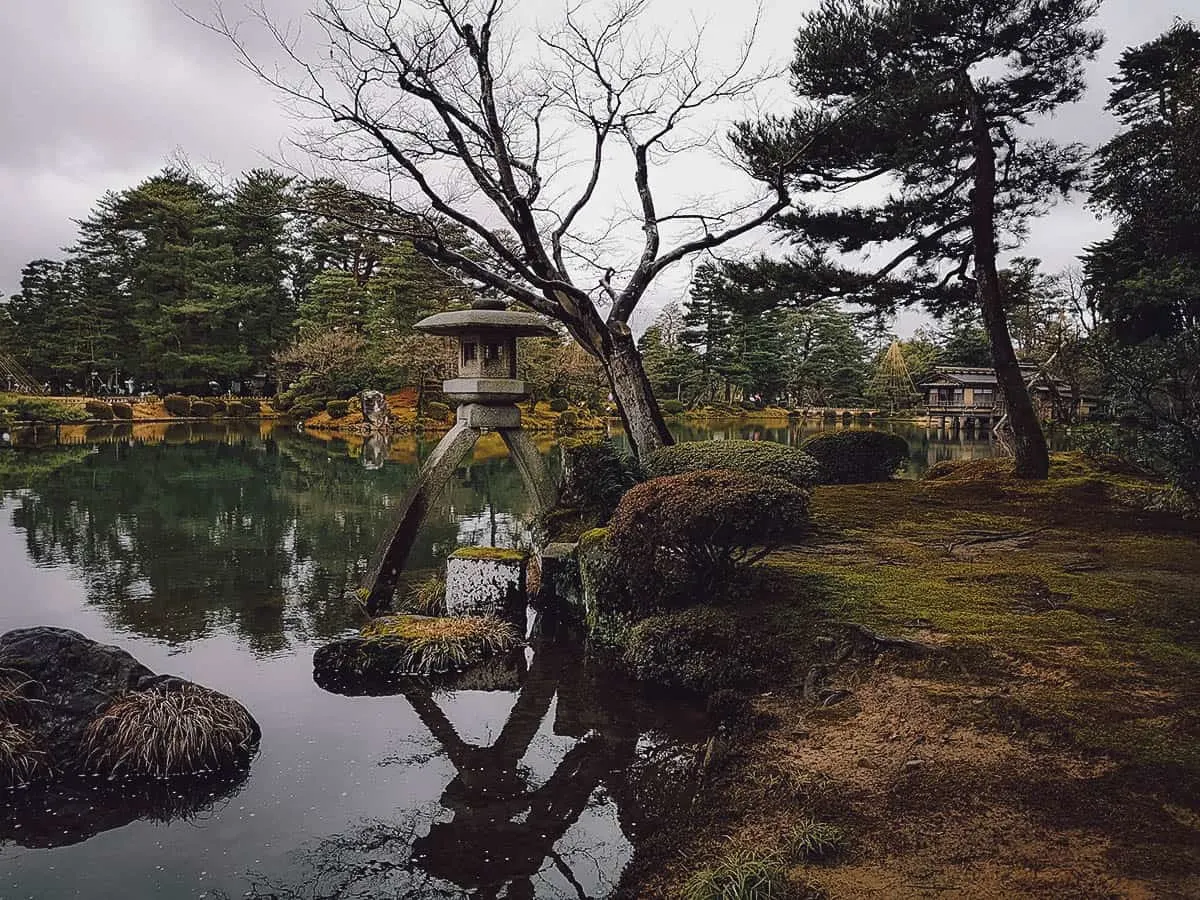
Kenroku-en is beautiful at any time of the year, but one of the best times to visit has to be in spring when the cherry blossoms are in full bloom.
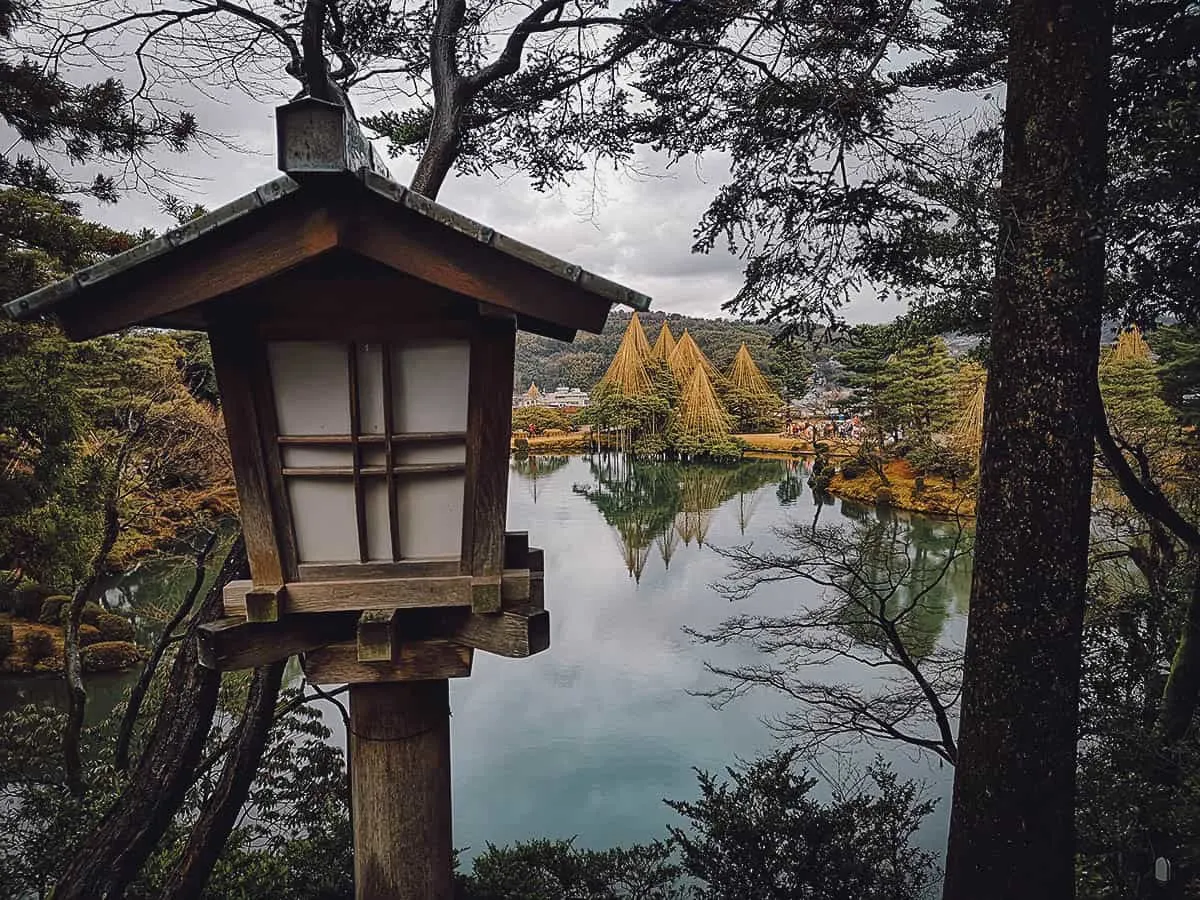
Operating Hours: 7AM-6PM (1 Mar – 15 Oct) / 8AM-5PM (16 Oct – 28 Feb)
Admission: JPY 320
Closest Station: Kanazawa Station
Estimated Time to Spend: About 1 hr
Kazuemachi Chayagai
From Kenroku-en, walk to Kazuemachi chayagai – one of three famous geisha districts in Kanazawa. It’s smaller than the other two but my personal favorite. It’s located by the river and is the least crowded of the three.
If you visit in spring, then you’ll be treated to a row of lush cherry blossom trees that hang over the river.
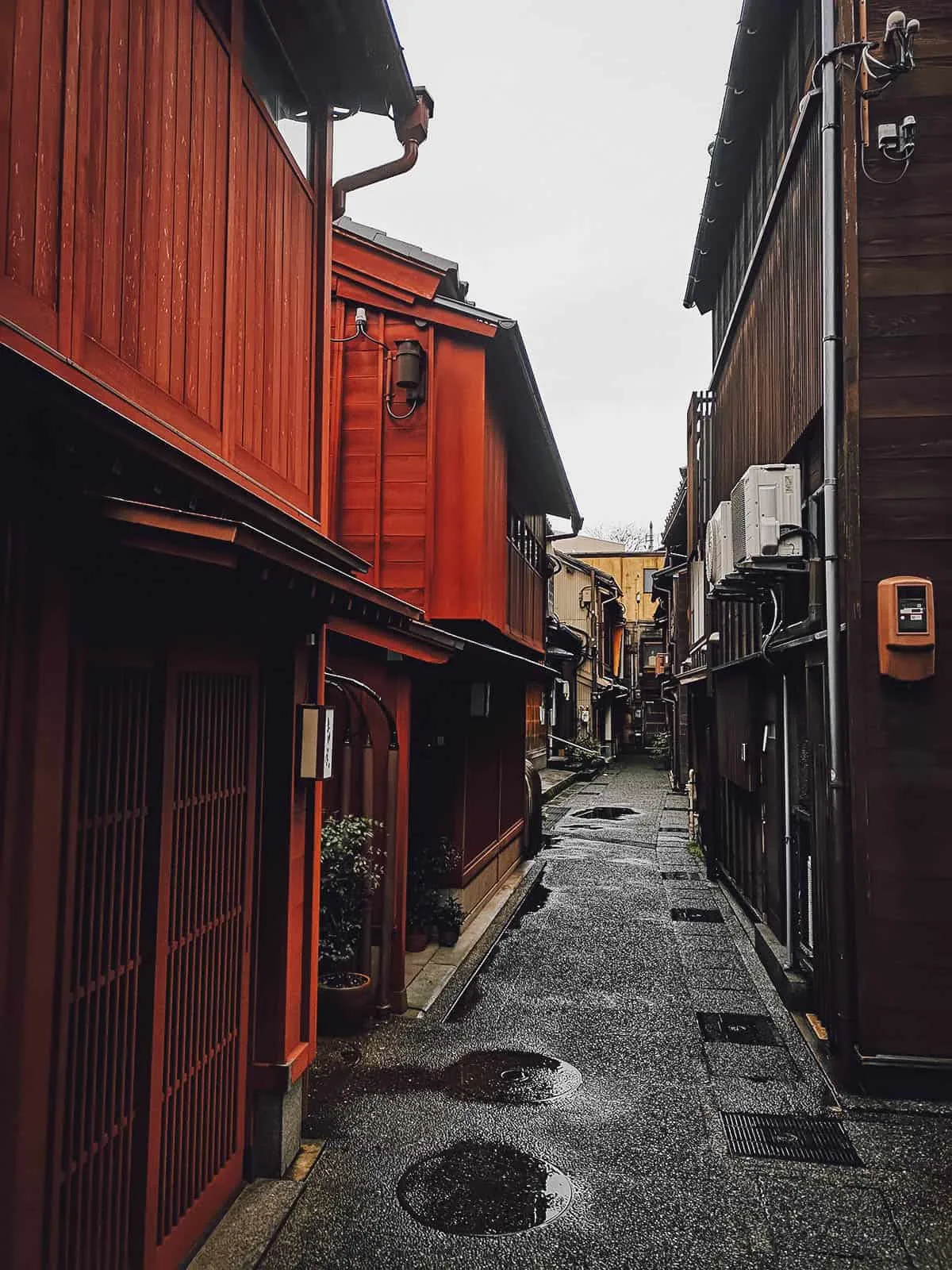
Estimated Time to Spend: About 30 mins
Higashi Chayagai
Higashi chayagai is the biggest and most famous of Kanazawa’s geisha districts. It’s home to many interesting shops, restaurants, and teahouses so you can spend about an hour taking photographs and exploring the area. For truly memorable photos, you may want to rent a kimono.
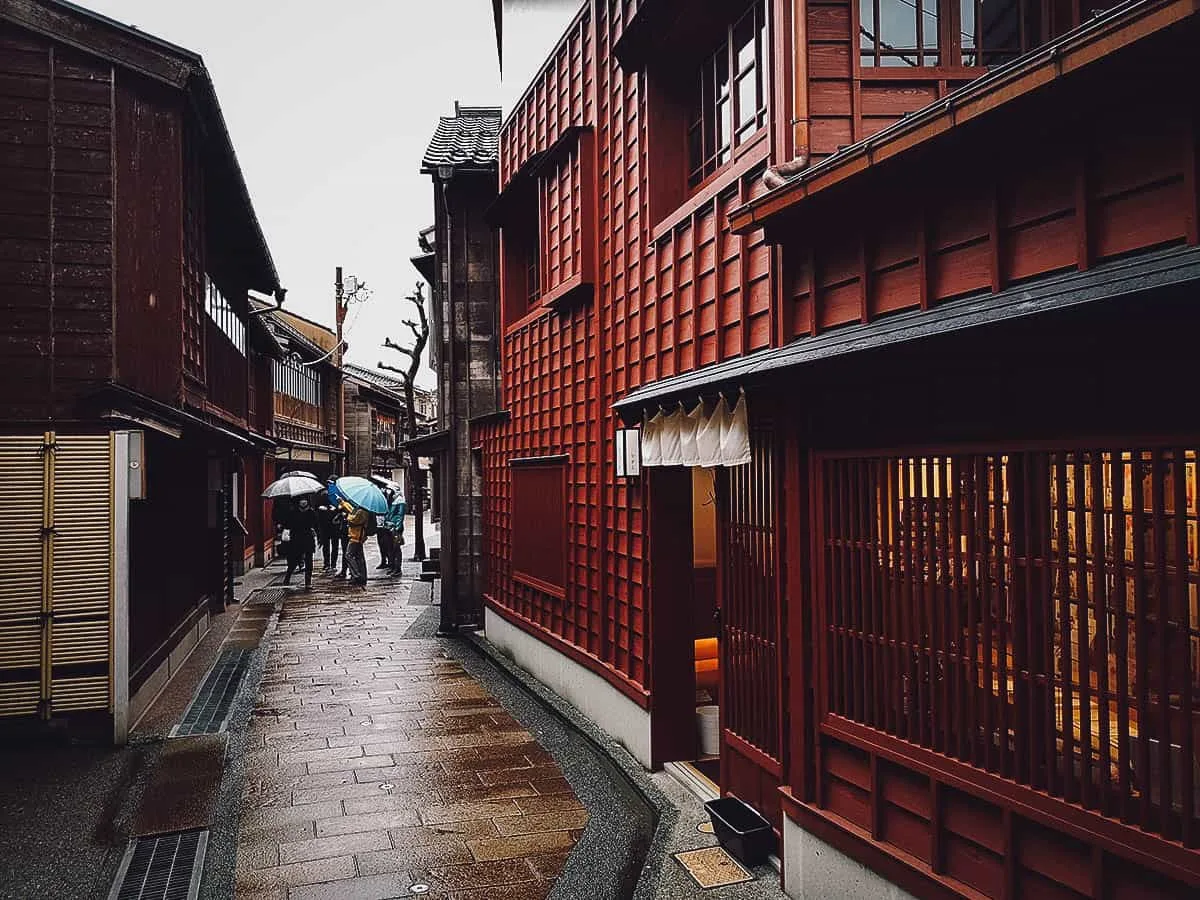
Estimated Time to Spend: About 1 hr
Kanazawa is famous for its gold leaf and accounts for 99% of total gold leaf production in Japan. You’ll find many products adorned with gold leaf, but one of the most interesting (and delicious) has to be gold leaf soft cream. They take a cone of Japanese soft-serve ice cream and adorn it with a sheet of gold leaf and cherry blossom sprinkles.
There are a few places that serve gold leaf soft cream in Higashi chayagai, but one of the most famous is Hakuichi.
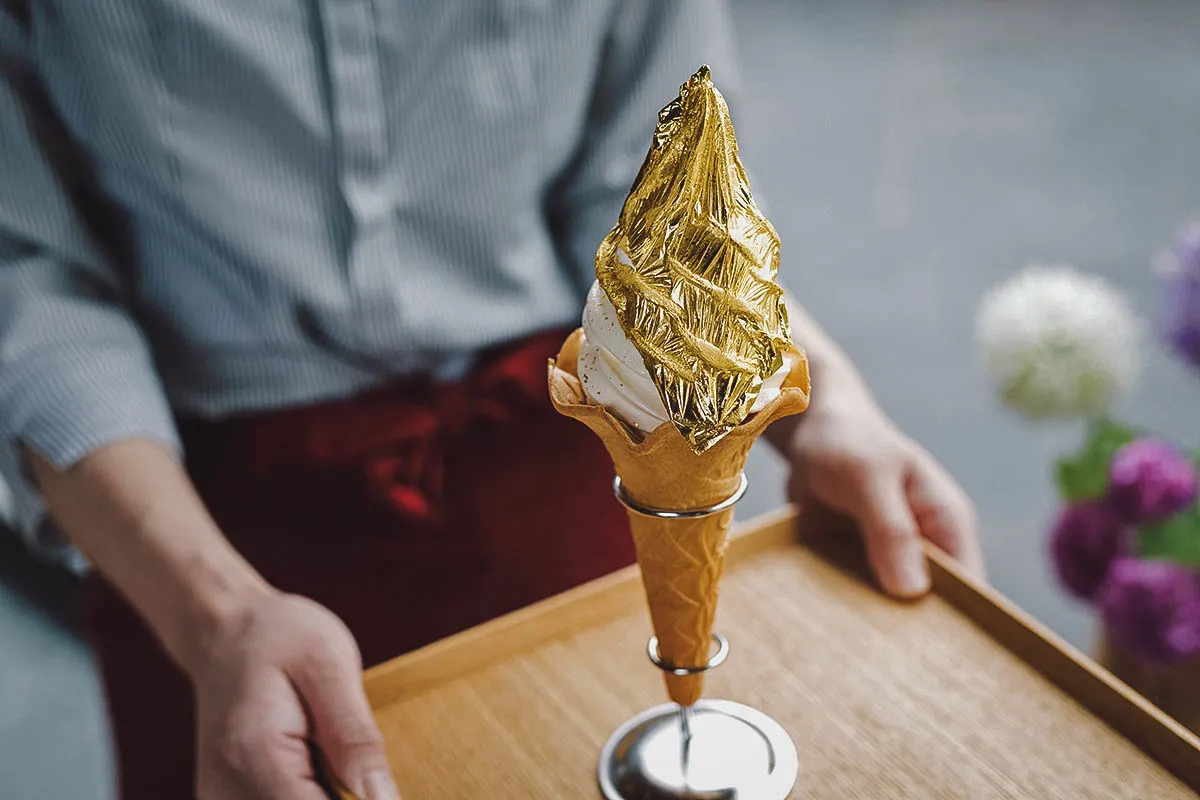
Omicho Market (LUNCH)
After exploring Higashi chayagai, it’s time to walk over to Omicho Market for lunch. Omicho Market is a covered market with over 200 shops and restaurants selling fresh produce and seafood.
Because of its prime location next to the Japan Sea coast, the seafood in Kanazawa is fantastic so you’ll have a wealth of seafood restaurants to choose from at the market. I had lunch at a kaitenzushi restaurant at Omicho that offered sushi sets for just JPY 500.
Check out our Kanazawa food guide for more recommendations on where to eat in Kanazawa.
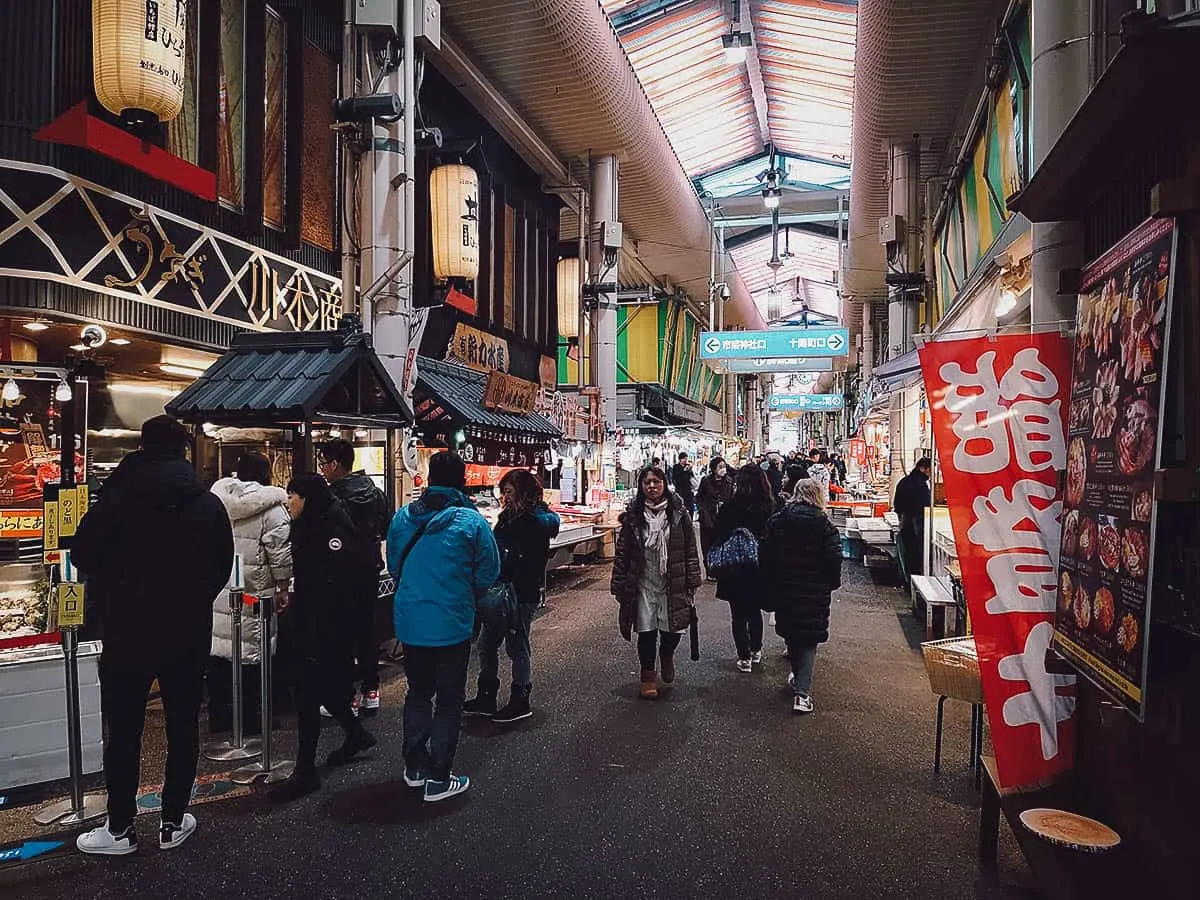
Operating Hours: 9AM-5PM, daily
Nagamachi Samurai District
Now that you’ve experienced a geisha district, it’s time to explore a samurai district. After lunch, walk from Omicho Market to Nagamachi samurai district, a neighborhood near Kanazawa Castle where samurai and their families lived during Japan’s Edo period.
There are a few samurai-related museums in Nagamachi, but like Kazuemachi and Higashi chayagai, the most interesting part about the samurai district is the neighborhood itself.
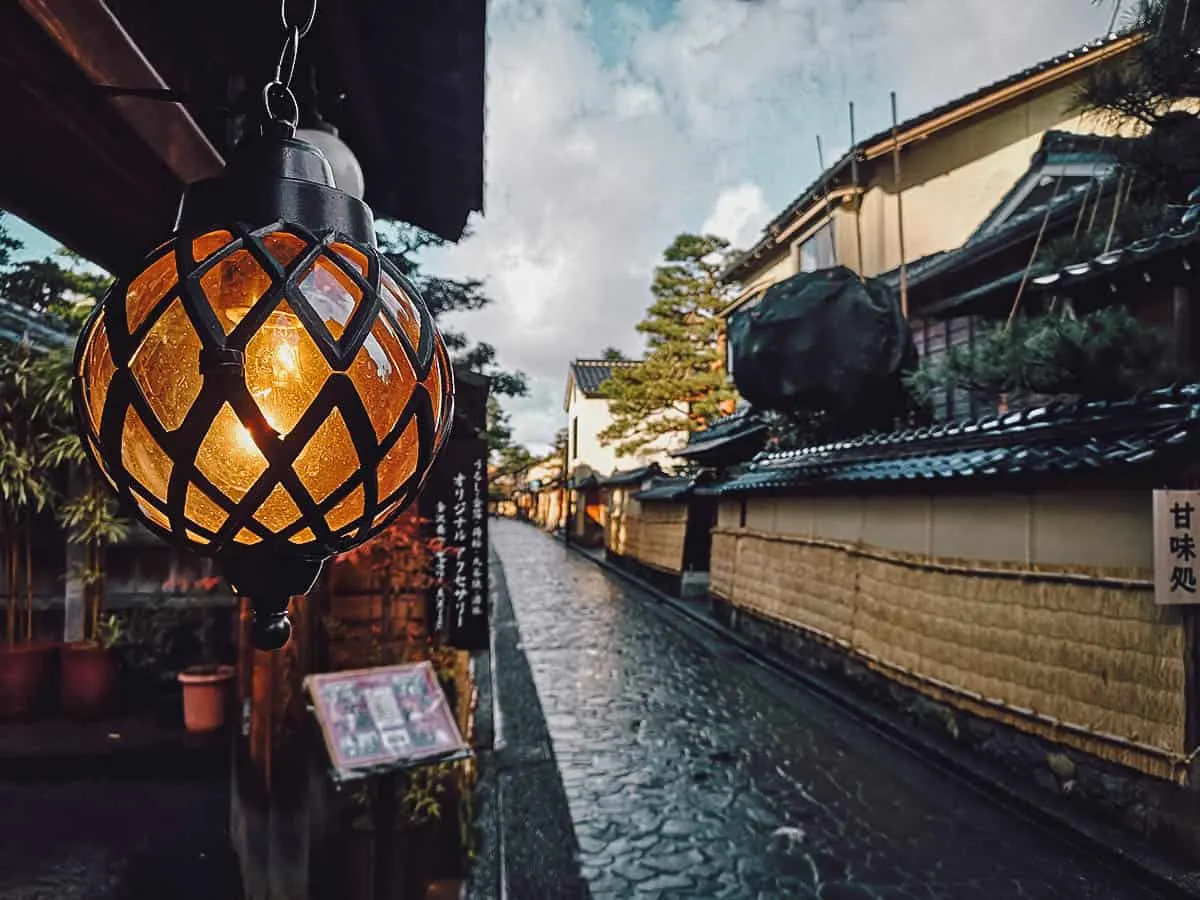
Estimated Time to Spend: About 30 mins – 1 hr
Rojo Park
If you visit Ishikawa prefecture in spring, then another place you have to visit is Rojo Park. Located about an hour south of Kanazawa by JR train, Rojo Park is a public park in Komatsu City famous for its cherry blossom trees and wisteria flowers. It’s open 24 hours and admission is free.
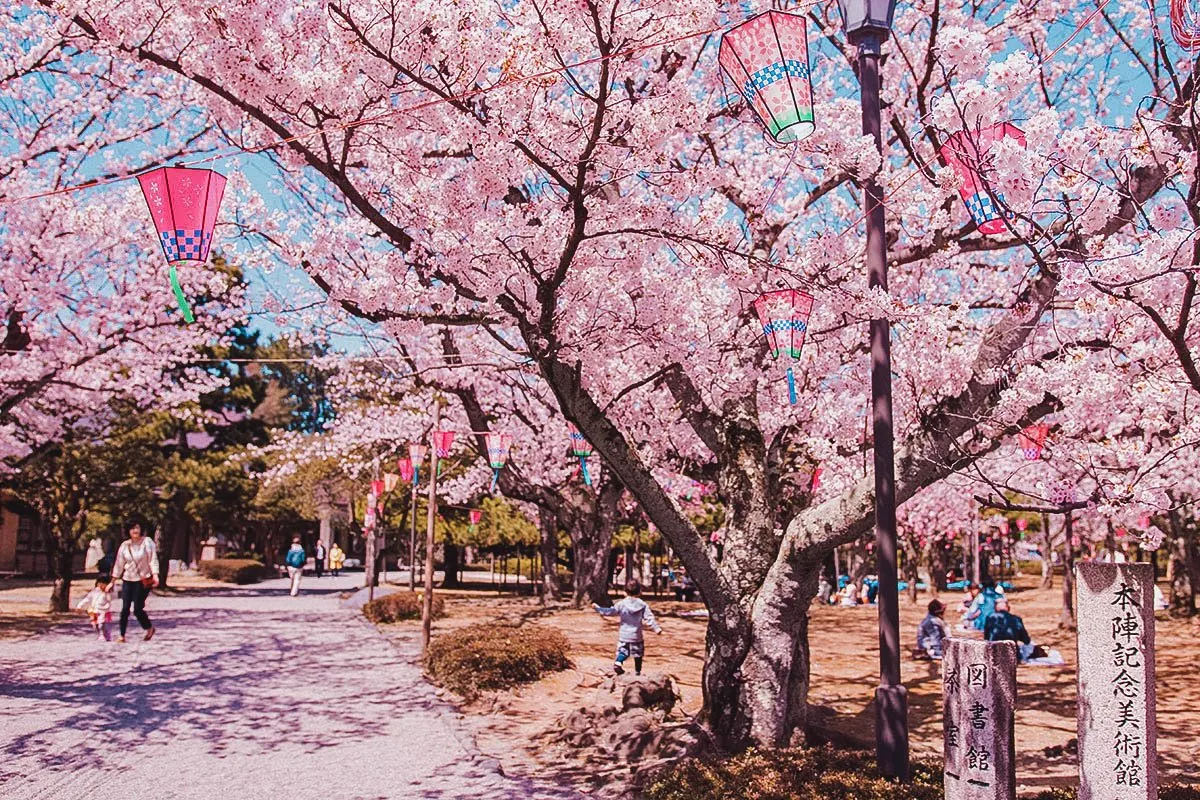
Operating Hours: 24 hrs
Admission: FREE
Closest Subway Station: Komatsu Station
Estimated Time to Spend: About 2 hrs
CHUBU ITINERARY DAY 5: Fukui
From Komatsu station, take a JR train to Fukui prefecture, your final stop on this 5-day trip to the Chūbu region. People who enjoy taking the road less traveled will enjoy Fukui, for the simple reason that it’s one of the undiscovered prefectures by international travelers in Japan.
Located by the Sea of Japan coast, Fukui is known for its world-renowned dinosaur museum and its many hot spring baths.
Asuwa River Cherry Blossom Row
If you visit Fukui in spring, then we suggest visiting Asuwa River before winding down at a hot spring resort. Along the river is a 2.2 km (1.4 miles) stretch of cherry blossom trees. When the trees are in full bloom, this portion of the Asuwa River is considered one of the 100 best cherry blossom viewing spots in Japan.
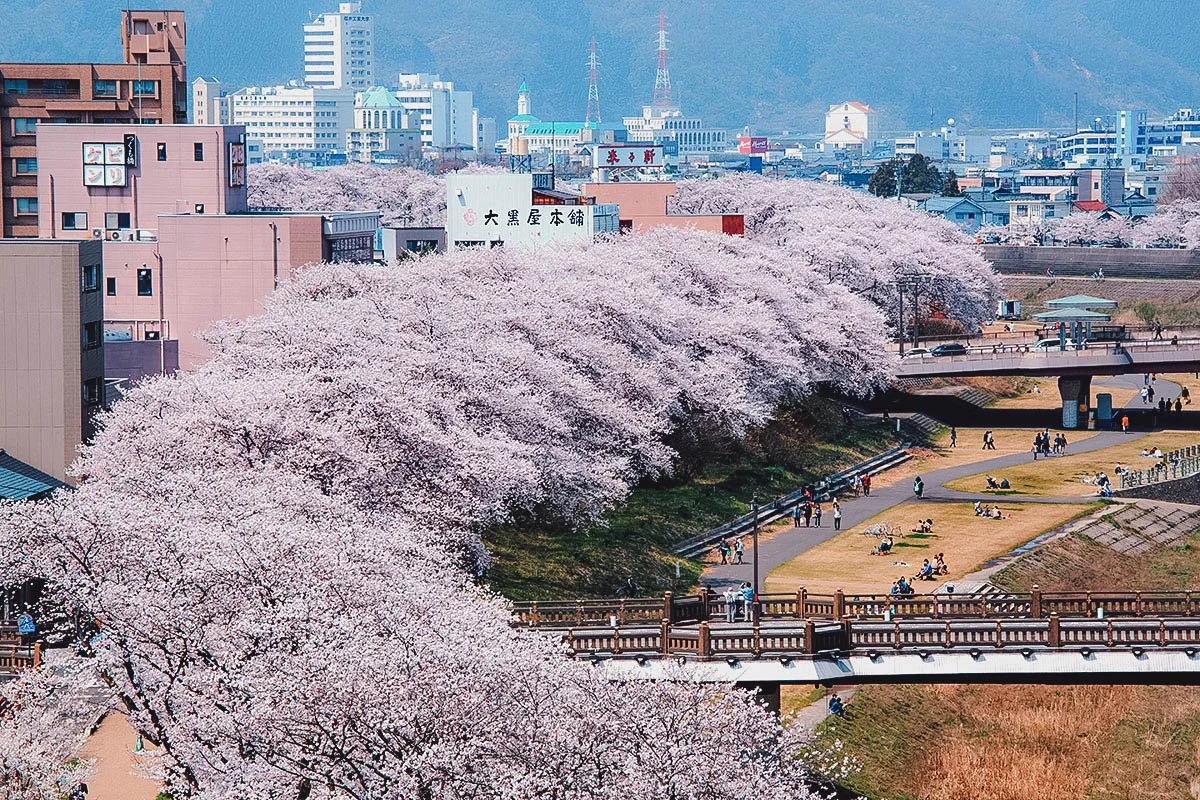
The Asuwa River cherry blossom row is just as pretty at night as it is during the day.
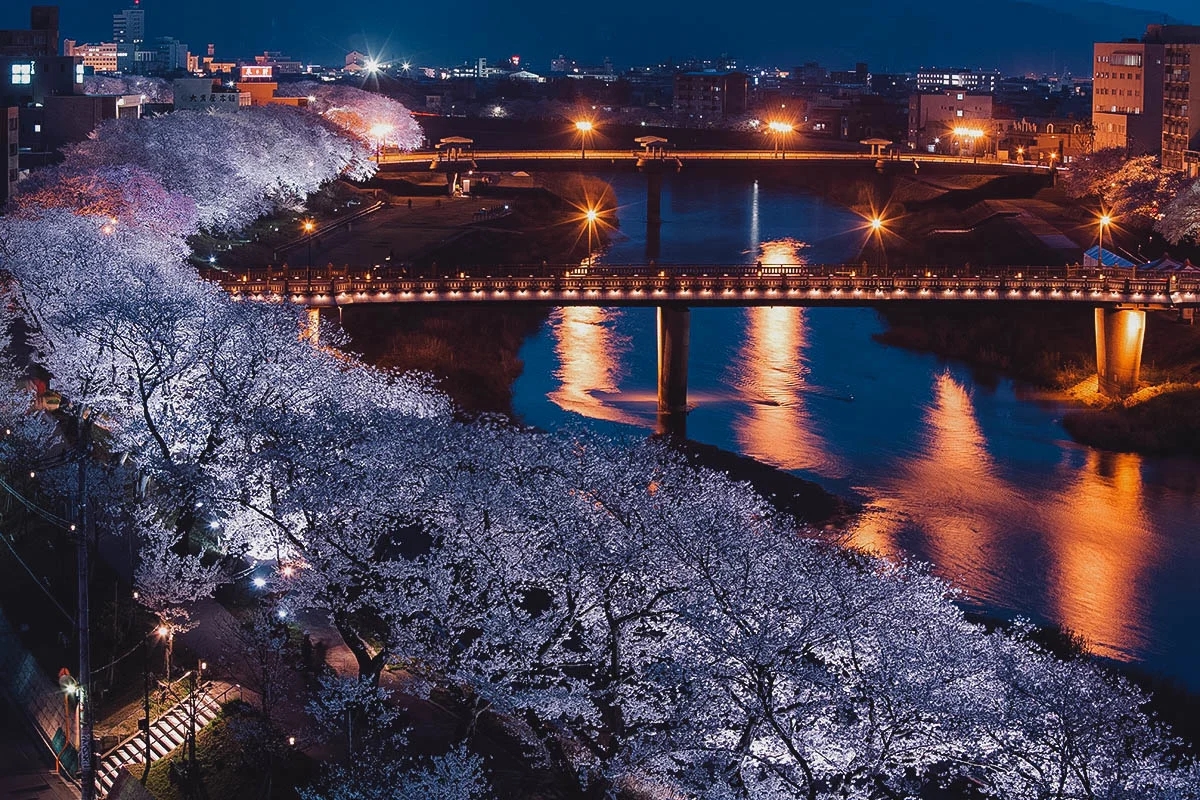
Closest Metro Station: Fukui Station
Estimated Time to Spend: About 1 hr
Tojinbo
From Fukui Station, you can take a JR train to Awara Onsen station and catch a bus to Tojinbo and its magnificent cliffs. Overlooking the Sea of Japan, Tojinbo is home to a series of cliffs with columnar joints that stretch for over a kilometer (3,281 ft). It’s a spectacular sight and not something I was expecting to see in Japan!
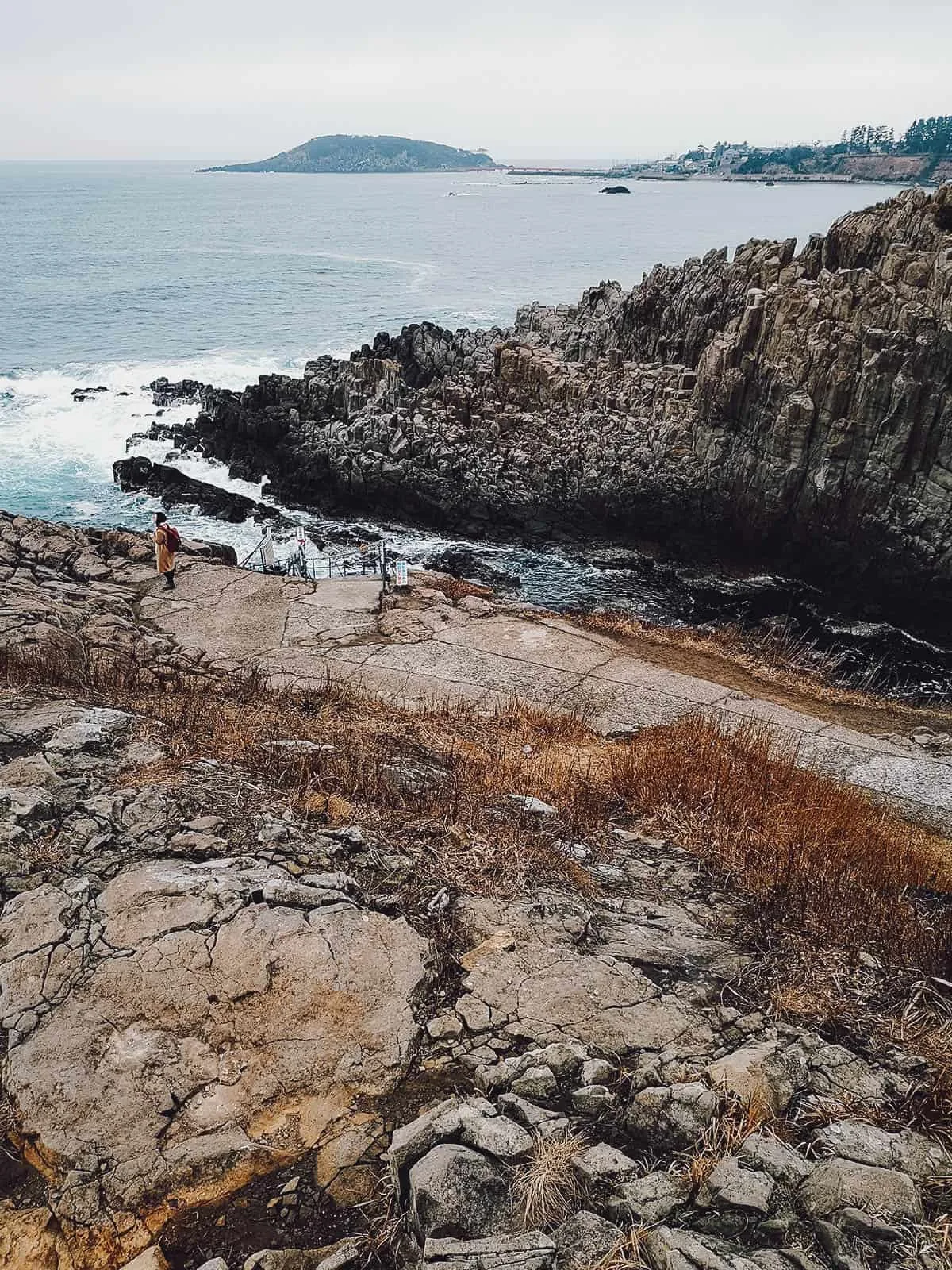
Closest Bus Stop: Tojinbo
Estimated Time to Spend: About 1 hr
Awara Onsen
After 5 days of exploring Central Japan, what better way to end your trip to the Chūbu region than by soaking in hot springs? Awara Onsen is a famous onsen town in Central Japan and a favorite destination for locals looking to bathe in healing hot springs.
In winter, there are few things more relaxing than soaking in one of Japan’s famed hot springs.
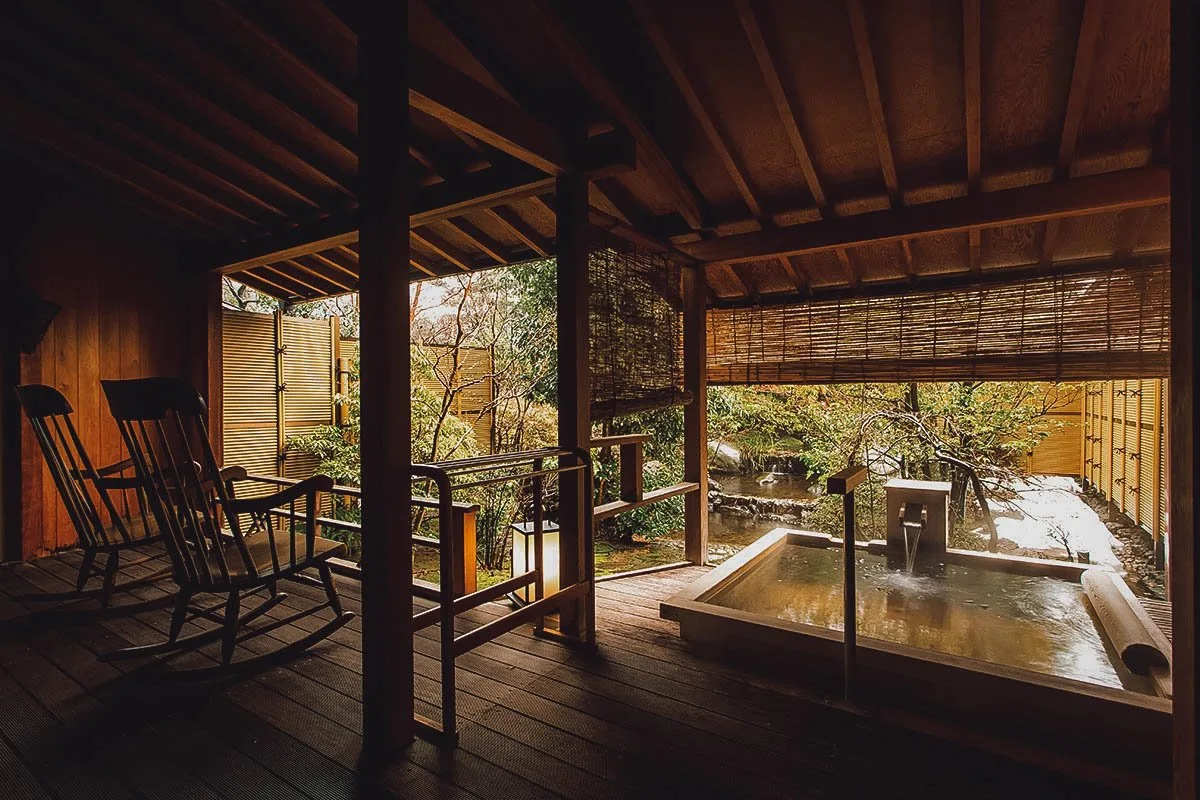
If you’d rather not soak your entire body, then you can use a free footbath in close to Awara-Yunomachi Station.
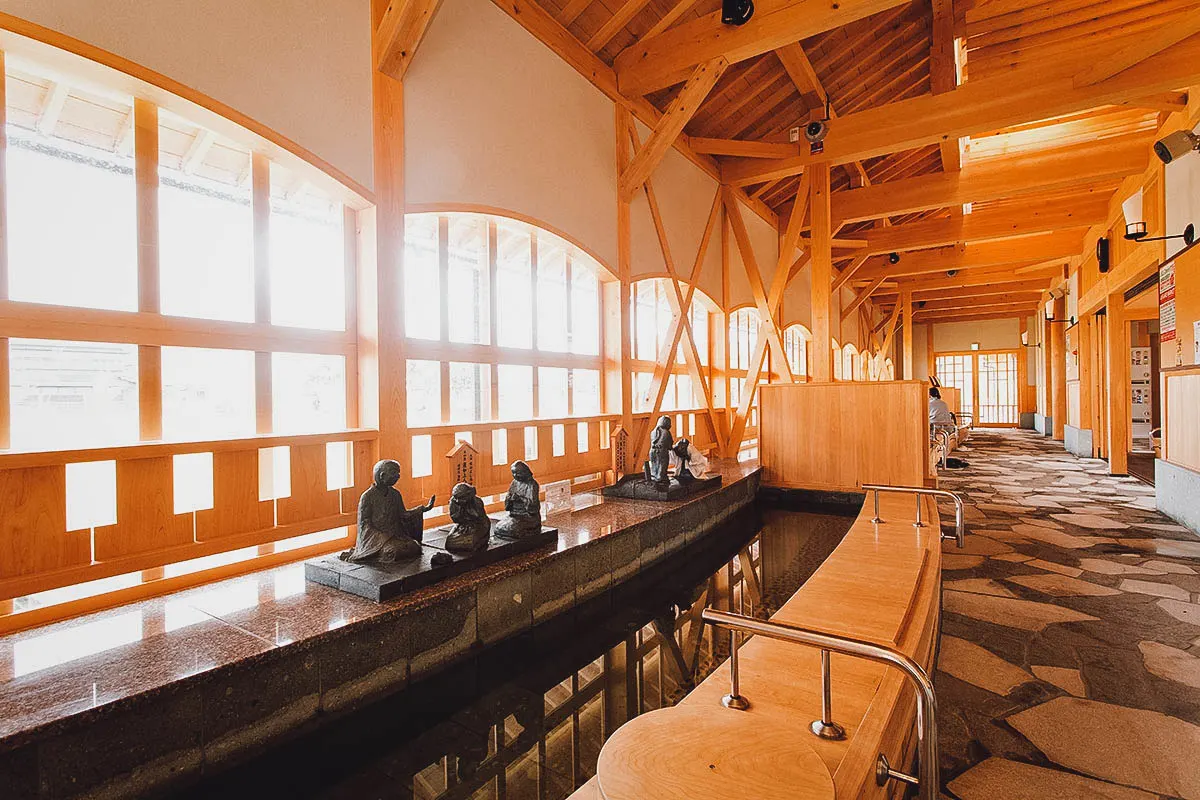
Admission: Varies per hot spring resort
Closest Metro Station: Awara Onsen Station
Estimated Time to Spend: As long as you want
Yukemuri Yokocho (DINNER)
After soaking in hot springs, you may want to have dinner and a few drinks at yukemuri yokocho, a cluster of about 10 izakayas or informal Japanese pubs. It’s a great place to knock down a few beers over sticks of yakitori and bowls of ramen.
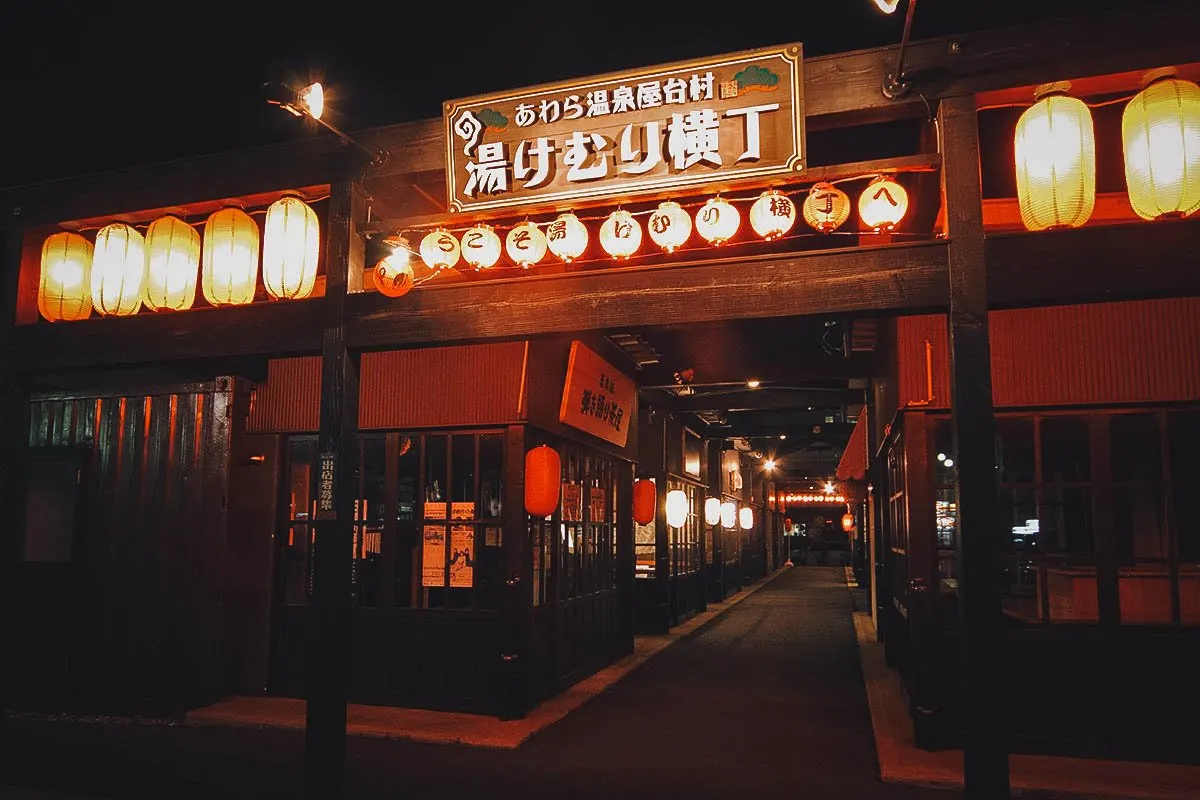
Operating Hours: Varies per izakaya
Expect to Spend: Varies per izakaya
Closest Metro Station: Awara-Yunomachi Station
Before leaving Fukui and moving on to your next destination in Japan, you may want to pick up a set of wakasa-nuri chopsticks. Traditionally decorated with seashell, eggshell, gold leaf, and other adornments, they’re a specialty item of Fukui prefecture and considered by many to be the best chopsticks money can buy.
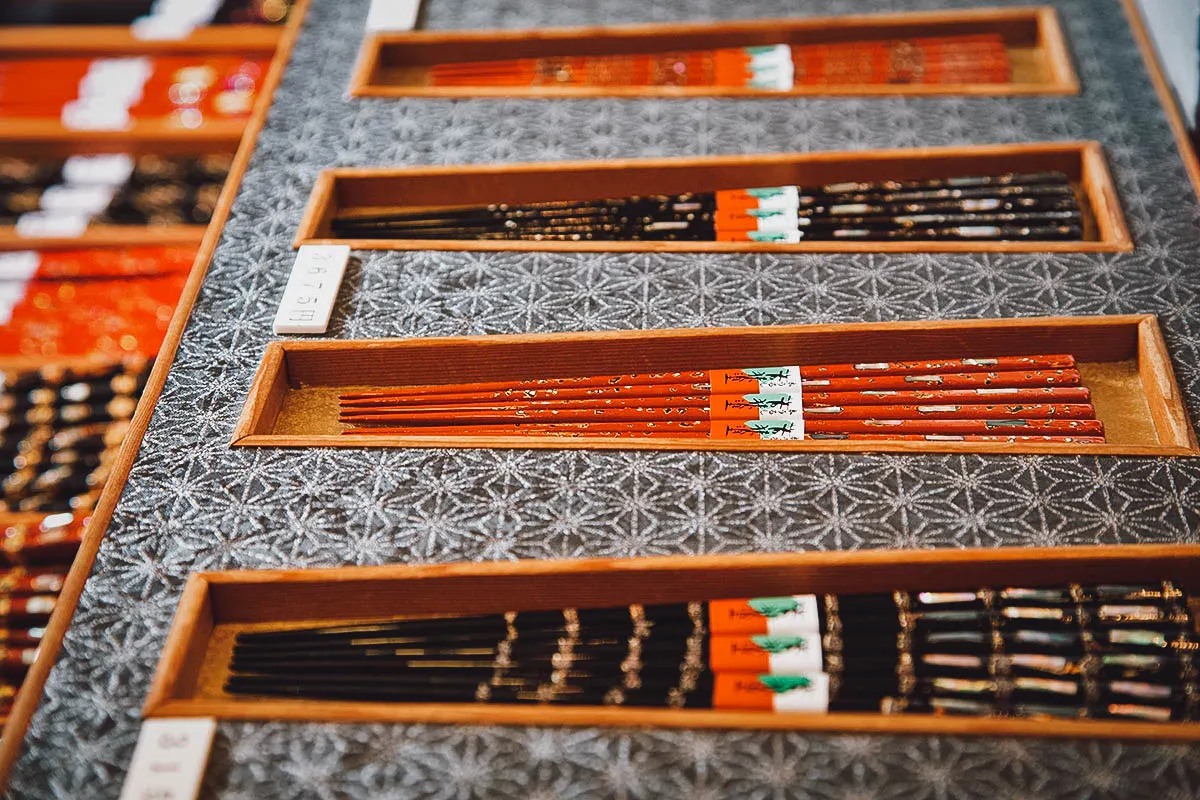
CHUBU LOCATION MAP
To help you understand where these destinations are in Central Japan, I’ve pinned them all on a map. Click on the link to open the interactive map in a new window.
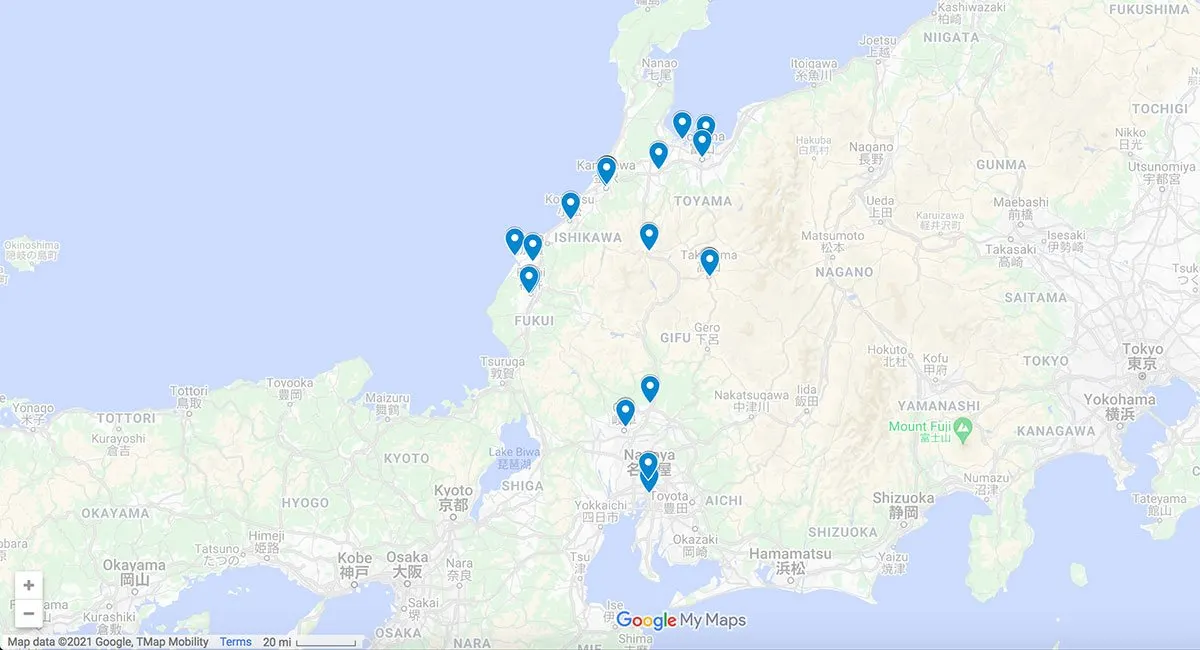
FINAL THOUGHTS ON THIS CHUBU ITINERARY
There are many ways to experience Central Japan but we hope this 5-day itinerary to the Chūbu region gives you plenty of ideas. It only covers a part of Central Japan so feel free to revise and include destinations in Shizuoka, Niigata, Yamanashi, and Nagano prefecture if you like.
For people looking to go off the beaten path in Japan, there are many interesting destinations in Chubu so we hope this article points you in the right direction. And as advised, don’t forget to pick up a Takayama-Hokuriku Area Tourist Pass before your trip. It’ll be your new best friend when exploring the Central region.
Disclosure
This Chubu itinerary was written in partnership with the tourism board in the Central Japan Area. They shared some recommendations and pictures for the article, to which I added some of my personal favorite attractions and restaurants in the Chubu region.
Some of the links in this Chubu itinerary are affiliate links, meaning we’ll get a small commission if you make a booking or purchase at no extra cost to you. As always, we only recommend products and services that we use ourselves. We truly appreciate your support as it helps us make more of these free travel guides. Thank you!


Getz
Saturday 9th of September 2023
Did you guys stayed overnight in each town or did you only have 1 base and just did daytrips?
JB & Renée
Saturday 21st of October 2023
We stayed overnight in each town.